No products in the cart.
Sailing Ellidah is supported by our readers. Buying through our links may earn us an affiliate commission at no extra cost to you.

Everything You Need To Know About Sailboat Heeling
A sailboat will heel or lean over at an angle when you sail in any direction other than almost straight downwind. The wind pressure on the sails will force the vessel to a sideway angle, while the righting moment of the keel’s weight and lateral resistance in the water counteracts this energy. When a sailboat tilts over like this, it is called heeling .
For a beginner, heeling over can be intimidating and feel unnatural, and I have seen many white faces on their first sailing trip . I certainly remember my heart beating a bit faster during my first sailing experience.
In this article, I’ll explain everything you need to know about sailboat heeling. I’ll xplain why it happens, and how to control and use it to your advantage. We’ll also cover how to adjust your sails and rigging to reduce or increase heeling, and how to deal with different conditions effectively.
Why do sailboats heel over?
To be able to sail at any angle to the wind, a sailboat needs to take advantage of the wind’s force in the sails to make it move forward.
When air hits the sails at the right angle, it generates lift. Some of the energy will force the boat forward, and the rest will try to push the boat sideways through the water. However, the sailboat’s keel prevents lateral movement sideways to a certain degree, and the remaining energy will make the boat move forward at a sideway angle.
The closer to the wind you sail, the more you heel. As you fall off and start pointing away from the wind, the boat’s heeling angle decreases. Eventually, you will reach a point where you are sailing directly downwind, and the keel doesn’t need to work as hard to provide lateral resistance and move the boat forward because the wind is already blowing in the direction you want to go.
What is the optimal heeling angle?
Some boats like catamarans, trimarans, and planing racing monohulls are designed to be sailed primarily upright. Most cruising monohulls, however, are displacement boats and have to heel to go forward when sailing at an angle to the wind.
Most cruising sailboats generally have an optimal heeling angle of 10-20 degrees. When sailing close-hauled , you might have to push it down to 25 degrees to keep your forward motion, but heeling too far will probably make you slower. 10-15 degrees is a good compromise between performance and comfort.
We have a simple method to find the best heeling angle for our particular boat in the conditions we are sailing. When the boat heels over, it will try to turn itself back up by turning into the wind. This is called weather helm .
To keep the boat straight on course, we compensate for the weather helm by countersteering with the rudder, which also generates more lift up to a certain point. Compensating too much makes the rudder act like a break, which will slow us down.
Keeping the angle of the rudder between 2 and 7 degrees gives you a nice balance between performance and heeling angle. On many cruising boats with a steering wheel, keeping your center mark between ten and two o’clock is an excellent rule of thumb.
How do you control heeling on a sailboat?
There are several ways to control and reduce the heeling angle when sailing, and there are good reasons why we want to.
A typical scenario is when you are sailing with a good balance on the helm at a decent heeling angle. Then, all of a sudden, the wind increases, and the boat starts to heel excessively. As a result, you get more weather helm as the boat tries harder to round up into the wind, and the wheel gets hard to control.
The boat is now overpowered, and you are heeling too much.
Luckily, we have three easy ways to prevent the boat from heeling too much:
- Adjust sail trim
- Adjust course
- Reduce sail area by reefing
Let us take a look at each of our options.
1. Adjust the sails
De-powering the jib or genoa by easing off the sheets or letting out the mainsail traveler is a quick way to regain control over the boat. If you sail on a reach, easing the sheets will turn the sideway force into forwarding force. When eased far enough, you are actively releasing the wind out of the sail, and the sail will start to luff.
When sailing downwind, easing the sheets is the only viable way to de-power the sails quickly, as you might be unable to turn the boat around and back into the wind. If you get too overpowered, you risk broaching, which can be dangerous.
If the wind increase was just temporary gusts, you might want to either actively work on releasing and pulling the sheets, often referred to as “pumping,” or settle for lower performance and slacker sheets. When you sail upwind, this works as a quick way to de-power the sails, but working with the sheets for every gust means you will lose height and not point well.
This article from Savvy Navvy explains broaching very well and has several videos displaying different broaching situations.
2. Adjust the course
Turning the boat into the wind will take power out of the sails and is easy to do when sailing upwind. When we sail close-hauled, we have a trick we can apply to increase our performance.
A powerful ” feathering ” technique is simple to apply and works well when sailing upwind. Instead of easing the sheets in a gust, you keep the sheet tension and steer the boat higher into the wind. As the apparent wind angle moves aft when the strength increases, we use this to our advantage to keep our height by sailing to the angle of our heel instead of the angle of the wind.
I wrote an article about how high a sailboat can point that you might be interested in : How High Can A Sailboat Point?
Feathering requires an active and focused helmsman, and as soon as the gust stops, you have to fall off again to keep your heeling angle and not lose power in the sails.
Continuing to fall off and bear away while easing off the sheets will also calm the boat down and make it turn more upright. This technique is helpful if you get tired or feel like you are pushing yourself and the boat too hard. Adjusting the course to a downwind point will also reduce the apparent wind speed and can be a good solution if you need a break.
3. Reduce sail area by reefing
When the wind isn’t just gusting but steadily increasing, it is about time to reduce your sail area by reefing. If the boat is heeling more than 20-25 degrees, you have too much canvas exposed, and reefing at this point will make you sail faster, safer, and more comfortably.
It is advisable to reef earlier rather than later as it can be hard to control the boat when it gets overpowered. Pushing limits while sailing is only for experienced people, and any seasoned cruiser agrees that a conservative approach to increasing weather is smart. If you ask yourself, “Should I take a reef?” the answer is always a big yes.
The reef can easily be shaken out if your hunch was wrong or if it was just some gusts or a short squall. Conservative and safe are the magic keywords. Even if you aren’t anywhere near the maximum heeling angle, less sail area can give you a much more comfortable ride with less heel, even if it means sacrificing a little bit of speed.
How far can a sailboat heel before capsizing?
I get this question a lot, especially from those sailing for their first time. When sailing close hauled, we sometimes push the boat to the point where it may seem like we will tip over and capsize. I often see faces going white when the toe rail dips into the water… Luckily, sailboats are designed very cleverly.
The wind can not heel a sailboat over far enough to capsize. Sailing boats are designed to round up into the wind if they are overpowered and heeling too much.
It is nearly impossible to fight the helm hard enough for the boat to tip over, even if you want to. And if you could, the rudder will eventually lose grip in the water, and the boat will round up until it points upright into the wind with its sails fluttering.
However, you want to be careful when sailing downwind, especially with a spinnaker. As you are sailing off the wind, your apparent wind is lower than your true wind, and sometimes, it can be hard to notice wind increases. Since the boat doesn’t heel over as much as it does upwind, everything might seem fine until you suddenly are overpowered and going too fast.
Getting overpowered can lead you to a broach, which can knock you over in extreme cases, especially if the waves are big. A keelboat will turn itself around again, but you will probably lose your mast and sails, and we want to avoid that!
Monohull sailboats do heel, and they have to in order to generate forward momentum. How far they heel dramatically depends on the boat. They won’t tip all the way over, even if it may seem so, and will usually round themself up into the wind, where you will be left upright with fluttering sails.
Heeling too much is unsuitable for comfort or speed, and finding a good balance of sail area and weather helm will give you the smoothest ride. Be careful, reef early, and don’t push the limits. Sail your boat conservatively until you gain more experience, and remember to enjoy yourself on the water.
If you want to learn more sailing basics, visit my beginner’s guide here.
Sharing is caring!
Skipper, Electrician and ROV Pilot
Robin is the founder and owner of Sailing Ellidah and has been living on his sailboat since 2019. He is currently on a journey to sail around the world and is passionate about writing his story and helpful content to inspire others who share his interest in sailing.
This is great, easy to understand and is helpful for my comfort level!!!
Thank you for your kind words, I’m glad you liked it!
Hey there, Natalie from Social Busy Bee, your partner in the exciting world of Instagram growth. I’ve unearthed something phenomenal for skyrocketing your Instagram profile and I’m thrilled to share it with you!
Social Growth Engine introduces a revolutionary service that propels your Instagram engagement to new heights. It’s a breeze:
– Focus on designing unforgettable content. – Extremely budget-friendly at a mere $36/month. – Safe and secure (no password needed), highly efficient, and Instagram’s best friend.
I’ve witnessed extraordinary results firsthand, and I’m sure you will too! Boost your Instagram presence this instant: http://get.socialbuzzzy.com/instagram_booster
Warm regards, Your ally Natalie”
Leave a Reply Cancel reply
Your email address will not be published. Required fields are marked *

Sailboat Heeling Explained In Simple Terms (For Beginners)
If you are new to sailing, then there are many sailing-related terminologies that you will need to learn.
One of those terms is ‘heeling.’ In this article, we will explain what sailboat heeling is and how to control your sailboat when it heels over.
Here is What “Heeling” in Sailing Means:
Heeling is the term used for when a sailboat leans over to either side (port or starboard) in the water by the excess force of the wind. Heeling is normal and counterbalanced by the sailboat’s keel or the crew’s weight distribution on a dinghy.
Table of Contents

What Exactly Makes A Sailboat Heel?
All sailboats are designed to heel, but a sailboat heels over when there is too much wind in the sails, forcing the boat to lean over and lose the harnessed wind power to move it forward.
As a boat heels, the wind pressure on the sails decreases because the sails present a smaller area and less resistance to the wind. The further the boat heels (or leans over), the less pressure.
In addition, boats with a keel have lots of ballast, or weight, to keep them upright in all but the strongest of wind or hurricane conditions. All sailboats will heel or lean over in strong winds, sometimes so far that the rail will dip into the water, and waves will wash onto the deck.
Heeling is simply a part of sailing, and many sailors enjoy it, especially when racing.
How Do I Keep My Sailboat From Heeling?
While all sailboats are designed to heel, sailors can use various techniques to reduce the amount of the angle of the heeling.
These techniques include the following:
Feathering Upwind –
One of the quickest and easiest techniques a skipper can do in a strong gust of wind is to steer the boat a bit more into the direction of where the wind is coming.
This is called feathering upwind. Doing this releases or spills the wind out of the sails and decreases the wind’s pressure on the sails. This will cause the sails to flap and make a lot of noise (called luffing).
Luffing the sails too much can cause damage to the sails, so this technique is a temporary quick fix and not a long-term solution.
Easing the Mainsheet or the Traveler –
Another quick technique is to change the angle of the mainsail so that it releases more wind and eases the pressure on the sail.
You can do this by letting out the main sheet (easing the mainsheet) or releasing or easing the traveler control sheet. Both methods will change the angle of the mainsail, releasing the wind pressure and causing your boat to sail more upright.
After a strong gust of wind has passed, you will be able to pull in the mainsail again quickly, to carry on sailing on course.
Reefing the Sails –
Reefing the sails is a technique used to see or feel that the wind is building or getting stronger. Reefing entails making your sail area smaller, which will work differently on different boats depending on the boat’s set-up.
Reefing the headsail or jib will depend on whether the sailboat has a roller furler or hank on sails. If the boat has hank on sails, you will need to change the headsail to a smaller sail or even a storm jib. Today, most sailboats are equipped with a roller furling headsail, making the headsail sail area smaller.
You can ease the headsail sheet and pull on the roller furler out hauler to roll in the sail a couple of times. This is the equivalent of changing to a smaller sail.
Reefing the mainsail is a little more complicated. Mainsails generally have 2 – 3 reefing points which are stitched in when the sails are made.
The mainsail will need to be partially dropped to access these reefing points, but first, you will need to turn the boat to face the oncoming wind to take the pressure off the sail.
Once you have partially dropped the mainsail, you will need to hook in the reefing point at the mast, haul in the corresponding reefing line, and then retain the main halyard, which is the rope that holds up the mainsail.
How Much Should A Sailboat Heel?
Every sailboat is different, so the exact heel angle for each sailboat will differ.
However, the answer is probably somewhere between 15 and 25 degrees for a comfortable ride in real terms. Thirty degrees is considered the maximum heel for a keel sailboat, depending on the boat’s specific build, design, and characteristics.
Multihulls or catamarans need to be sailed at minimal heel angles; otherwise, they risk capsizing.
But practically, there is a much simpler way to know when your boat is heeling over too far. If you have to fight the steering, otherwise known as the helm, you are heeling too far, and you will need to adjust your sails or course concerning the wind.
How Much Heel Is Too Much?
Similarly, how much heel is too much will also depend on the type of sailing you do. Long-distance cruising, where your boat is your home, will typically involve less heeling than a racing monohull rounding the cans.
However, the amount a sailboat should heel is not opinion. All sailboats are designed to sail at a specified angle of heel. Each sailboat design is for a specific purpose, whether racing, cruising, or somewhere in between, and at their optimum heel angle, there is a minimum wet surface on the boat.
The sails are at a maximum exposure to the wind. When you are sailing and are not at the desired angle, the sailboat is not performing at its full potential.
In addition, if your boat is heeling too much, the boat will become difficult to steer and will slow down. So it’s better to make the necessary adjustments to make yourself and your crew more comfortable and go that little bit faster!
How Far Can A Sailboat Heel Before Capsizing?
For the sake of this article, when we refer to sailboats, we are referring to sailboats with keels and heeling.
Unlike small sailing dinghies, sailboats are designed to heel over without capsizing.
A sailboat is designed to comfortably heel at a certain angle, usually between 15 – 25 degrees. Heeling over more than this is uncomfortable and slows the boat down.
Generally, sailboats with keels can not tip over or capsize under normal sailing conditions. This is because of the weight in the keel. The weight of the keel has been designed to counterbalance the force of the wind in the sails. Plus, the more a boat heels over, the less pressure there is in the sails, and the keel will bring the boat to face into the wind where there is less pressure on the boat overall.
However, this does not mean a sailboat cannot capsize. There are stories of sailboats being knocked down in big waves and strong winds, but this is often temporary as the sailboat will often self-right or come upright by itself.
Extreme conditions such as gale-force winds combined with big seas, too much sail out, and waves crashing over the boat and flooding the cockpit may all combine to capsize a sailboat.
Learning to Sail: Heeling Over
How To Reef A Sail – A Beginners Guide
Click to share...

- All Blog Posts
- Sailing Education Posts
- Boating Knowledge
- Free Sailor Toolkit
- Sailing Vacations Posts
- Yacht Charter Guides
- Join a Sailing Flotilla
- Sailing Adventure
- FREE Virtual Reality Sailing Training & Racing
- 2 Free Courses >
- Online Courses
- Vacations & Charters
- Schools & Instructors
- International Sailing License
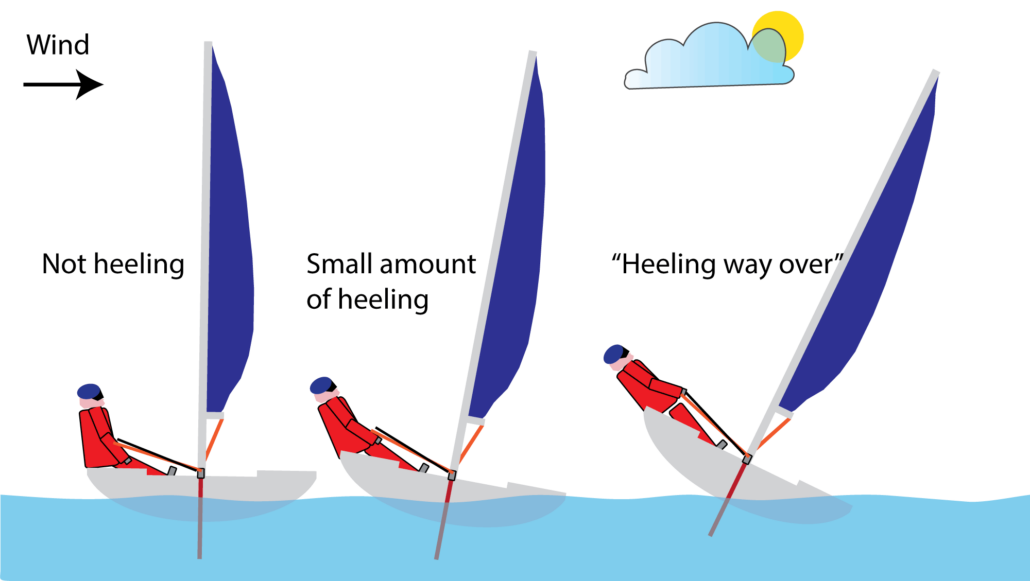
What is Angle of Heel on a Sailboat
And, what Angle of Heel on a Sailboat is acceptable?
What is heeling over on a sailboat?
Heeling over or “heeling” on a sailboat is when it leans over.
Why does a sailboat heel over and why doesn’t it tip over?
Remember your tommee tippee cup? It had a rounded bottom and a weight loaded into the rounded bottom. No matter how much water you put in the cup, the weight at the bottom made sure the cup stood upright – and the rounded bottom meant that if you pushed it over, it would stand right back up.
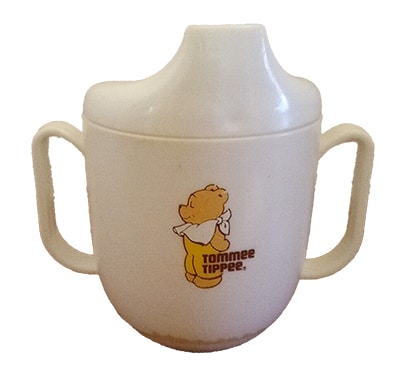
Your finger pushing sideways on the top of the cup is just like the wind acting on the sails. The wind acting on the sails puts pressure on the sails. Pressure over the entire area of the sails creates a force. The greater the area, the greater the force, and the stronger the wind, the stronger the force. The distance the force is collectively acting on the sails is about 1/3 of the way up the sails. This point is called the center-of-pressure. This is like your finger pushing all the wind’s force at that center-of-pressure point. The sailboat, like the tommee tippee cup has no choice but to lean (heel) over.
The propensity for the sailboat to heel over depends on the height (distance) of the center of pressure above the water line. The physics formula for this is force x distance which equals a physics term called “moment” (not like a moment in time). The “moment” can be considered as the same as “torque” or even easier – as the “tipping force” or (heeling force). The greater the distance and force – the bigger the tipping force.
In high wind conditions, you can lower the center of pressure by spilling some of the wind out of the top of the sails by twisting out the sail at the top (done by easing the mainsheet which allows the boom aft to rise – thus creating less tension on the leech of the sail and allowing the top to twist out).
Twisting out the top of the sail has a double effect. There is less sail area presented to the wind at the top. This means a lower center-of-pressure (less height) and less area – giving rise to less tipping moment.
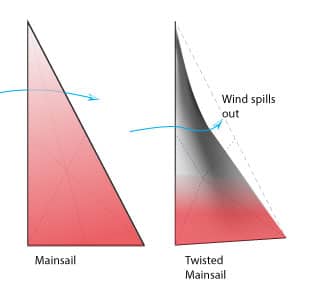
Another way to lower the center of pressure is to reef the sail (partially lower it). This also acts to reduce the area of the sail. Less area and less height of the center-of-pressure reduces the tipping force. Here is an image showing reefing and twisting effect on the tipping moment. The image also discusses how twisting and reefing moves the center-of-pressure forward. This has the added benefit of reducing what is known as weather helm – the boat wants to automatically turn up into the wind.
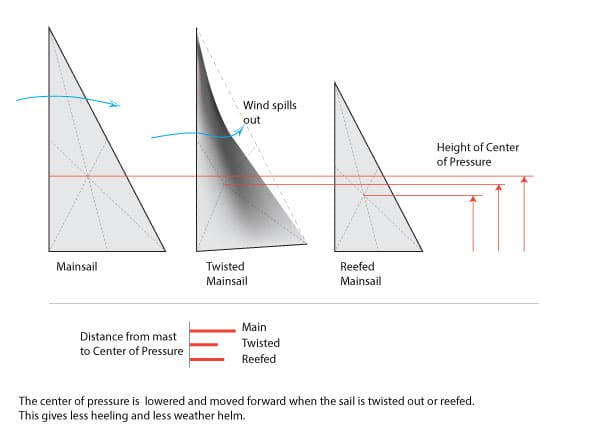
What stops the sailboat from completely tipping over?
A balance between gravity acting on the weighted keel and the wind force on the sail stops the boat from completely tipping or heeling over. As the boat heels over, the sail area is not upright and so less sail area is presented to the wind. Also as the boat heels over, gravity acting on the weighted keel that is rolling upwards with the heel of the boat creates a force to stand the boat back upright. At some point, both forces meet in agreement and compromise with a defined heeling angle.
Imagine the weighted keel is just like how your Tommee Tippee cup uses gravity to force the boat to stand back upright. Thus it becomes a balance between the boat being pushed over by the force on the sails and the weight of the keel trying to stand it back up.
See this animation below of the balance of forces. CLICK on the green Increase Wind button. You will see how the “righting force” increases as the weighted keel lifts outwards off the centerline. You’ll also see how the tipping force decreases because less sail area is presented face-on to the wind. It means that the righting force from the keel will always overpower the wind force at some angle of heel. This is not to say that sailboats never tip over, they do but only usually in cases of a massive unprepared-for gust (60+ knots), giant wave, or if they lose their keel. Dinghies of course do tip over from the improper balance of the crew.
What is an acceptable heel angle?
The acceptable angle of heel on a sailboat depends on various factors, including the design of the boat, its ballast, the boat’s purpose, and the prevailing conditions. Generally, here are some guidelines:
- Dinghies and Small Boats : Dinghies are designed to be agile and may heel significantly, especially when sailed aggressively. Capsizes can happen but are often a part of dinghy sailing.
- Cruising Sailboats : Most cruising sailboats are designed to be stable and comfortable. They typically perform best at an angle of heel between 10° and 20°. Once a cruising boat heels beyond 20°, its weather helm tends to increase, making it more challenging to steer, and the boat might not sail as efficiently.
- Racing Sailboats : Racers might push their boats harder, and some racing designs can handle more heel. Nevertheless, excessive heel can still decrease speed as more wetted surface (hull in the water) causes increased drag.
- Multihulls (Catamarans and Trimarans) : These vessels are designed to sail relatively flat. Heeling angles over 10° can be a cause for concern on a multihull. When a multihull starts to heel significantly, there’s a risk of capsize, especially if a hull lifts entirely out of the water.
- Keel Design : Boats with full keels tend to be more stable and resist heeling more than those with fin keels or lifting keels. However, once they reach a certain heeling point, full keel boats can be more challenging to bring back upright.
- Seaworthiness : Some boats, especially bluewater cruisers, are designed to be very seaworthy and can handle significant heel angles, even beyond 45°, without capsizing. Still, this doesn’t mean it’s comfortable or efficient to sail them at such angles.
Factors like gusty winds, big waves, and the condition of your sails (e.g., having a full mainsail up in strong winds) can also influence heel.
What to do if you are getting excessive heeling angle:
- Reef Early : Reducing sail area can help to decrease heeling and make the boat easier to control.
- Adjust Sail Trim : Flatten your sails by tightening the outhaul, cunningham, and backstay (if adjustable).
- Change Your Point of Sail : Sailing more downwind can reduce heeling, but be cautious about accidental jibes.
- Ease the Sheets : Letting out the mainsheet or headsail sheet can reduce power in the sails.
Lastly, the best way to understand how much heel is acceptable for your specific boat is to gain experience in various conditions and, if possible, consult with more seasoned sailors or trainers familiar with your type of boat.
This information was drawn from the NauticEd Skipper Course (for large keelboats) and the NauticEd Skipper Small Keelboat Course . Sign up now to learn the knowledge you need to know to effectively skipper a sailboat.
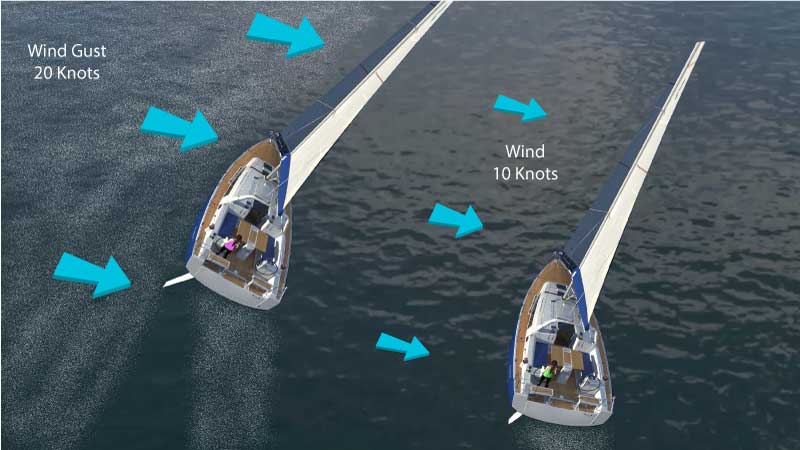
My vision for NauticEd is to provide the highest quality sailing and boating education available - and deliver competence wherever sailors live and go.
TWEET ABOUT

FIGHT CHILDHOOD CANCER
NauticEd is a fully recognized education and certification platform for sailing students combining online and on-the-water real instruction ( and now VR ). NauticEd offers +24 online courses , a free sailor's toolkit that includes 2 free courses, and six ranks of certification – all integrated into NauticEd’s proprietary platform. The USCG and NASBLA recognize NauticEd as having met the established American National Standards. Learn more at www.nauticed.org .

The NauticEd Vacations team are Expert Global Yacht Charter Agents – when you book a sailing vacation or bareboat charter through NauticEd, we don’t charge you a fee – we often save you money since we can compare prices from all yacht charter companies. PLUS, we can give you advice on which destination or charter company will suit your needs best. Inquire about a Sailing Vacation or Charter .
Online Sailing Courses Sailing Vacations | Charters Practical Sailing Courses Sailing Certification | License
Sign up for 2 FREE Sailing Courses Try sailing in Virtual Reality! Gift a Friend a Sailing Course Sailing Events | Opportunities
About NauticEd Contact Us NauticEd Support Privacy Policy

- New Sailboats
- Sailboats 21-30ft
- Sailboats 31-35ft
- Sailboats 36-40ft
- Sailboats Over 40ft
- Sailboats Under 21feet
- used_sailboats
- Apps and Computer Programs
- Communications
- Fishfinders
- Handheld Electronics
- Plotters MFDS Rradar
- Wind, Speed & Depth Instruments
- Anchoring Mooring
- Running Rigging
- Sails Canvas
- Standing Rigging
- Diesel Engines
- Off Grid Energy
- Cleaning Waxing
- DIY Projects
- Repair, Tools & Materials
- Spare Parts
- Tools & Gadgets
- Cabin Comfort
- Ventilation
- Footwear Apparel
- Foul Weather Gear
- Mailport & PS Advisor
- Inside Practical Sailor Blog
- Activate My Web Access
- Reset Password
- Customer Service

- Free Newsletter

Blue Jacket 40 Used Boat Review

Catalina 270 vs. The Beneteau First 265 Used Boat Match-Up

Ericson 41 Used Boat Review

Mason 33 Used Boat Review

How to Create a Bullet-Proof VHF/SSB Backup

Tips From A First “Sail” on the ICW

Tillerpilot Tips and Safety Cautions

Best Crimpers and Strippers for Fixing Marine Electrical Connectors

Polyester vs. Nylon Rode

Getting the Most Out of Older Sails

How (Not) to Tie Your Boat to a Dock

Stopping Mainsheet Twist

Fuel Lift Pump: Easy DIY Diesel Fuel System Diagnostic and Repair

Ensuring Safe Shorepower

Sinking? Check Your Stuffing Box

What Do You Do With Old Fiberglass Boats?

Boat Repairs for the Technically Illiterate

Boat Maintenance for the Technically Illiterate

Whats the Best Way to Restore Clear Plastic Windows?

Stopping Holding-tank Odors

Giving Bugs the Big Goodbye

Galley Gadgets for the Cruising Sailor

The Rain Catcher’s Guide

Sailing Gear for Kids

What’s the Best Sunscreen?

UV Clothing: Is It Worth the Hype?

Preparing Yourself for Solo Sailing

R. Tucker Thompson Tall Ship Youth Voyage

On Watch: This 60-Year-Old Hinckley Pilot 35 is Also a Working…

On Watch: America’s Cup

On Watch: All Eyes on Europe Sail Racing

Dear Readers
- Inside Practical Sailor
- Safety & Seamanship
Sailboat Stability Uncensored
The merits and limitations of the calculated gz curve..
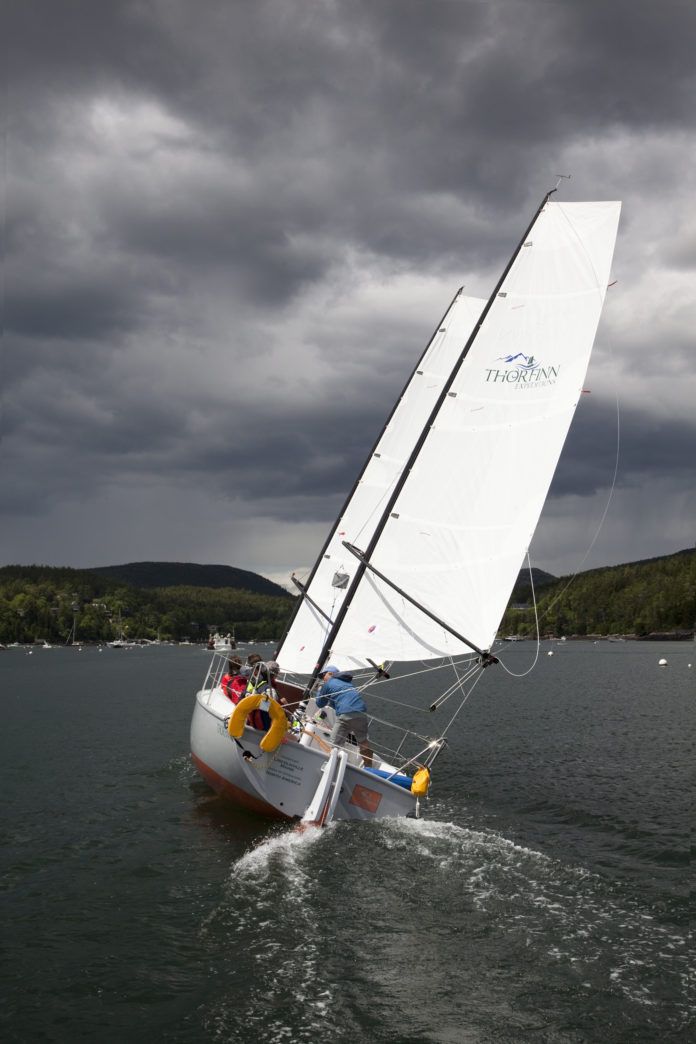
At its most basic level, my goal as a sailor is pretty simple: keep my neck above water. Speed, comfort, progress toward a destination are nice, but if I need gills to achieve any of these, something is amiss. And since an upside-down boat tends to interfere with this modest ambition, I’d say our recent obsession with stability is justified.
This is far from our first foray into this topic. Shortly after the 1979 Fastnet race disaster , in which 15 sailors died, Practical Sailor embarked on a series of articles on sailboat stability. The racing rules of that era had resulted in designs that were quicker to capsize than their heavier, more conservatively proportioned predecessors, and we needed to explore why.
Since then, the lessons of Fastnet have been absorbed by the design community, culminating with the CE Category system and formulas used by various racing bodies like the Offshore Racing Congress to evaluate a boat’s fitness for the body of water where it will sail. But it’s clear that the tools we use to measure stability, and the standards we’ve established to prevent future incidents are still imperfect instruments, as we saw in the fatal WingNuts capsize in 2011 . And in the cruising community, where fully equipped ocean going boats hardly resemble the lightly loaded models used to calculate stability ratings, we worry that the picture of stability is again becoming blurred by design trends. This video gives some insight into the dockside measurement process for racing boats.
Last month, we examined multihull stability , including an analysis of several well publicized capsizes. One of the key takeaways from that report was the significant impact that hull shape and design can have on a multihull’s ability to stay upright. Another key observation was the distinction between trimarans and cats, and why lumping them together in a discussion of stability can lead to wrong conclusions. As we pointed out, many of the factors that determine a multihull’s ability are related to hull features—like wave-piercing bows—that are difficult to account for when we try to calculate stability.
This month, we take another look at monohull stability. This time it’s a formula-heavy attempt to tackle the conundrum that many cruising sailors face: How can I know if the recorded stability rating for my boat reflects the reality of my own boat? Or, if there is no stability rating from any of the databases, like the one at US Sailing, how do I assess my boat’s stability?
Stability Resources
If you are unfamiliar with this topic, I’d recommend reading three of our previous reports before digging into this month’s article. “ Dissecting the Art of Staying Upright ” and “ Breaking Down Performance ,” both by PS editor-at-large and safety expert Ralph Naranjo, take a broad view of sailboat design elements and how they applies to contemporary sailors. Nick Nicholson an America’s Cup admeasurer and former PS Editor, also offers a succinct discussion of stability in his article, “ In Search of Stability ,” which I recently resurrected from the archives. (Nick, by the way, is no relation to the current editor.)
When we’re talking about stability, the essential bit of information that every sailor should be familiar with is the GZ curve. This graphic illustration of stability highlights the boat’s maximum righting arm, the angle of heel at which resistance to capsize is greatest. It also illustrates the angle of vanishing stability (also called the limit of positive stability), the point at which the boat is just as likely to turn turtle as it is to return upright. Most boats built after 1998 have a GZ curve on file somewhere, and US Sailing keeps a database of hundreds of boats for members. As this month’s article points out, however, the published GZ curve does not always perfectly transfer to our own boats. Nevertheless, it is usually a good benchmark for assessing your boat’s stability ratio—not to be confused with capsize ratio the stability index or STIX .
For a succinct discussion of stability ratios (see below), Ocean Navigator’s excerpt from Nigel Calder’s Cruising Handbook lays good groundwork for the theory. If you really want to dive into the topic, Charlie Doane presents a good overview in this excerpt from his excellent book “ Modern Cruising Design .” Doane, like many marine journalists, relies greatly on the work of Dave Gerr , former director of the Westlawn Institute of Yacht Design and now a professor with SUNY Maritime Institute. Gerr’s four books “ Propeller Handbook ,” “ The Nature of Boats ,” “The Elements of Boat Strength,” and “Boat Mechanical Systems Handbook,” all published by McGraw Hill, illustrate Gerr’s rare talent for taking complicated topics and making them comprehensible and fun to read.
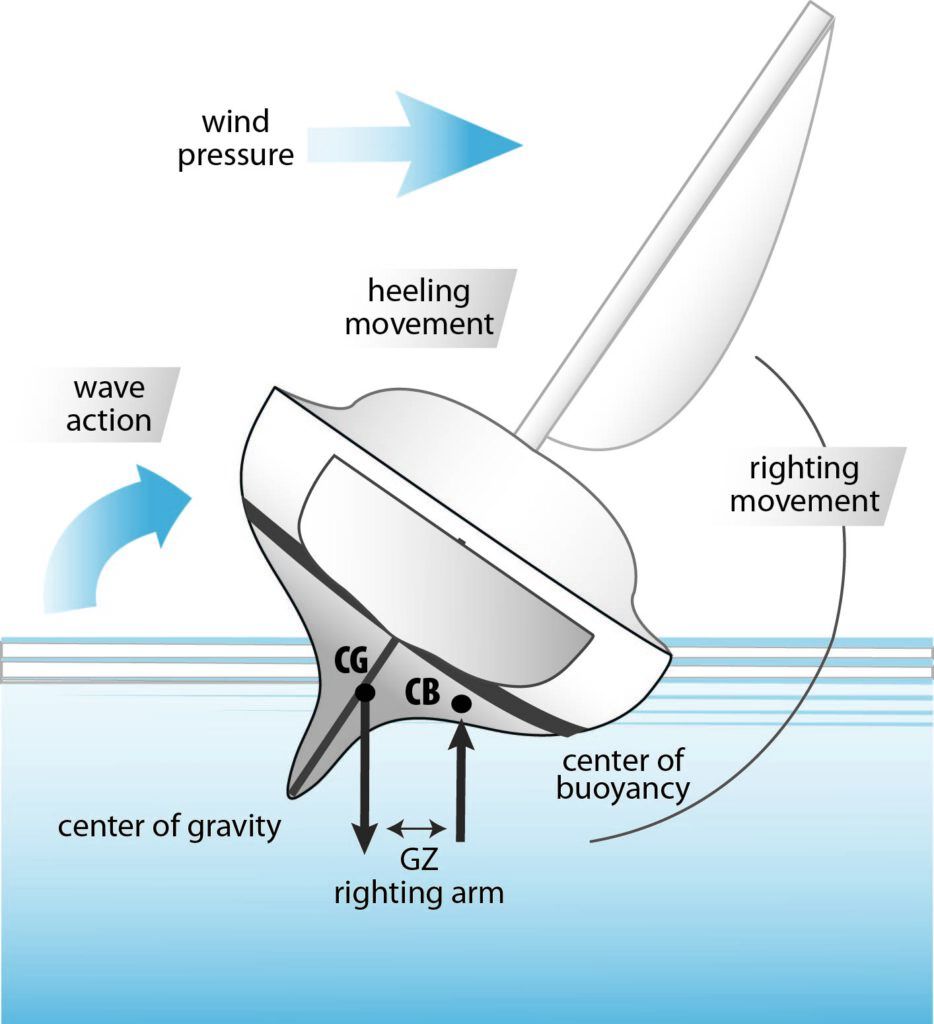
The GZ Curve
Shaped like an “S” on it’s side, the GZ curve illustrates righting lever. The high peak represents a boat’s maximum righting arm (maxRA), the point at which the forces keeping the boat upright (ballast, buoyancy) are strongest. The lowest valley, which dips into negative territory, represents the minimum righting arm (minRA), the point at which these forces are weakest. The curve also clearly delineates the limit of positive stability (LPS, also called the angle of vanishing stability), where the curve crosses into negative territory. Generally speaking, an offshore sailboat should have an LPS of 120 degrees or more. As Naranjo puts it, “It is this ability to recover from a deep capsize that’s like money in the bank to every offshore passagemaker.”

- Notice how lowering ballast lowers the center of gravity (CG) and increases a vessel’s limit of positive stability. In these examples, three identical 30 footers with the same amount of ballast, but differing keel stub depths, alter their draft and GZ curves. Boat 1 (5’ draft), Boat 2 (6’ draft) and Boat 3 (4’ draft). Note that Boat 3, the shoal draft option, has the lowest LPS and Boat 2, has the deepest draft, highest LPS and will sail to windward better than the other two boats. Editor’s note: One would think that with all the reporting we’ve done on stability, we’d be able to label a GZ curve correctly, but in the print version of the March 2021 issue we have mislabeled the curve. I apologize for the error. Sometimes, despite our best efforts, our own GZ curve turns turtle during deadline week. The correct version of the curve appears in the online issue and in the downloadable PDF. If you have questions or comments on boat stability, please feel free to contact me by email a [email protected] , or feel free to comment below.
RELATED ARTICLES MORE FROM AUTHOR
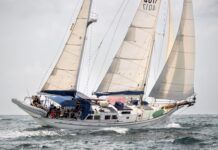
Herreshoff Mobjack: A Family’s Love Affair with a Traditional Ketch
17 comments.
Thanks for this reminder, another error has crept into the diagrams I think. The yacht seems to have 2 CBs and no GG.
I noticed that also, Halam. With no center of gravity and all buoyancy that boat will never sink. Of course, it could be at rest upside down also.
The link to the US Sailing database is pointing to a different place than I think you intended. It is not the database of boats, but rather information on curve calculation and definitions.
Hi Darrell, sorry to be the bearer of a correction, but it looks like the CG is labeled as CB in the first graphic.
As far as I know, a rule of thumb is that a sail boat can tolerate cross breaking waves not higher than her max beam. Is it true?
It often amuses me to see the many crew sitting out on the gunwale of a keel boat, (monohull) as the righting effect must shorely be minimal. Especially when compared to a small racing trimaran. It does help the ‘Gyration’ as shown in the Fastnet tragedy. Even the ‘Skiffs’ have ‘racks’ out the side, & I’ve seen all sorts of ‘keel arrangements’. They just haven’t put ‘floats’ on the end yet. I’d love to see someone do a ‘stability kidney’, as Lock Crowther said (all those years ago), the the righting, (capsizing force is 35? degrees off the bow. Thought provoking? not antaganistic. Keep up the good work, and thanks ‘B J’.
A useful view of stability is to consider where the energy to resist capsize is stored. As a boat rolls, the center of gravity is also raised with respect to the center of buoyancy, so the weight of the boat is lifted, at least through some angle (as long as the GZ is positive) and energy is stored as a lifted weight. This means that a stability incident is exactly equivalent to rolling a ball up a hill; it will always roll back down until it passes over the top of the hill. This is why most commercial and military stability standards use “righting energy” for at least one criteria. The ISO 12217-1 standard for coastwise and oceangoing power boats requires at least a minimum absolute energy and an energy ratio exceeding a nominal overturning energy of combined wind and wave (similar to the IMO standards for cargo ships and 46 CFR 28.500 for fishing vessels).
Can anyone comment on the stability of Volvo Ocean Race boats? While various mishaps have occurred over the years, I don’t believe any of them have capsized and remained inverted. VOR boats are nothing like the Pacific Seacraft and similar designs from more than 50 years ago, yet they seem “safe”.
Does anyone know why? Size, keel depth and weight, modern design tools?
Good and useful article, particularly to someone considering buying a new or used sailboat. As an add-on to the effect of draft, I would add that most, if not all, builders increase the weight of the keel to try to compensate for the reduction of righting moment with the reduction in draft. I recommend to readers Roger Marshall’s outstanding book entitled “The Complete Guide to Choosing a Cruising Sailboat”. Chapter 3 “Seaworthiness” and chapter 10 “Putting it All Together” are worth the cost of the book many times over. Unfortunately the book is getting out of date, it was published in 1999 and many newer sailboats have come on the market.
Mark, thank you for recommending to read Roger Marshall’s book.
May i suggest reading the book, “Seaworthiness the forgotten Factor”. The author (C.J.Marchaj) makes a number of interesting observations about modern boat design (published in ’86, so not that modern). What sticks with me is the notion that one aspect of seaworthiness is how well a person can survive inside the boat in question– deeper keels make for more righting moment but also a snappy roll, for example, promoting incapacitating seasickness. The boat has to be well enough behaved to “look after” the crew.
My boat 40 ft Samson SeaFarer ketch is fairly tender initially but then settles down once the rail is int he water….but I have never had the top of the mast in the water to see if it would recover well. Since I am not and engineer or math whiz (and don’t want to be!) I wonder if there is a practical way to actually test the stability while on the water. Is there a way for example to pull the top of the mast down to varying degrees/angles and measure the force it takes to do it and use that as a guide to stability. Could that provide some extrapolative certainty to going further around the wheel of misfortune? Crossing between NZ and Australia (45 years ago..) we were knocked over (not my current boat) with the top third of the mast in the water and she righted very quickly (very comforting) – no great mishap except to make the cook go wash the soup out of his hair and confirm all the things we hadn’t tied down…including dishevelled crew.
Cheers Gerry
Can someone please link to the article referenced above on multihull stability? I’ve searched, but cannot find it. Thank you kindly!
I have the same inquiry as Jet. I can’t find the Multihull article. Please advise ASAP!
The link in the 4th paragraph works for me:
https://www.practical-sailor.com/sailboat-reviews/multihull-capsize-risk-check
Couldn’t find this link either. Thanks.
Is it possible to get a link to the USSailing boat database, or some hints on where to find it on the site? The current link just goes to ussailing.org.
LEAVE A REPLY Cancel reply
Log in to leave a comment
Latest Videos

Cabo Rico 34 Boat Review

Super Shallow Draft Sailboat: The Leeboard Sharpie

Hans Christian 41T – Boat Review

Seven dead after superyacht sinks off Sicily. Was the crew at...
Latest sailboat review.

- Privacy Policy
- Do Not Sell My Personal Information
- Online Account Activation
- Privacy Manager

Sail Far Live Free
How much do you heel.
| Model 2056 Clinometer from Rieker Instruments |
Post a Comment
Popular posts from this blog, top 10 favorite affordable bluewater sailboats, go small and go now 5 pocket cruisers to take you anywhere.

Escape to the Sea: How to get from the Great Lakes to the Caribbean

Staying in Control in Breeze
June 2, 2023
There’s nothing like the leeward rail of a sailboat buried in the water, the tiller or wheel gripped firmly fighting the pressure, or is there? Actually, any top sailor who specializes in making a boat get from point A to point B as quickly and efficiently as possible will tell you that the real secret to speed is balance and control. Even sailors who may not care about making their boat go a 10th of a knot faster upwind can relate to the need for understanding sail trim and sailing technique as an aid to control. Trim and technique allow you to be the master of your boat when it gets windy, instead of the other way around.
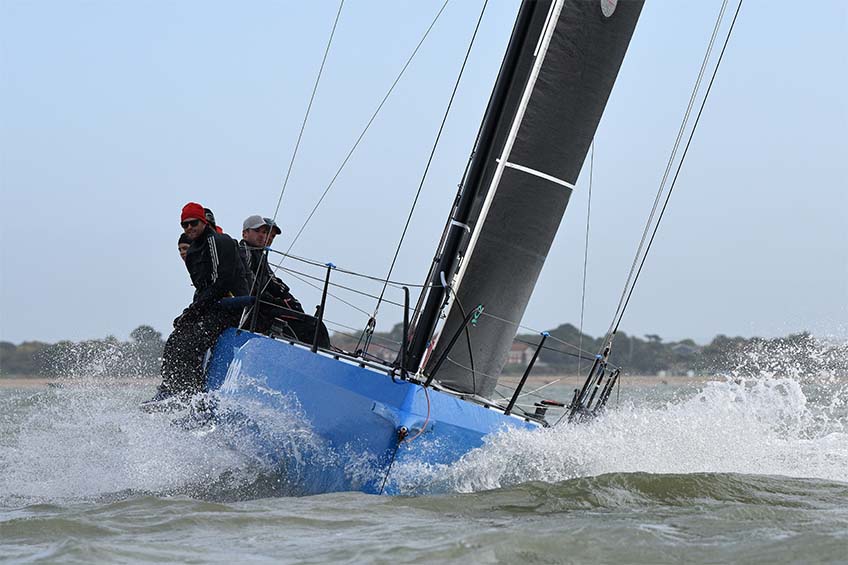
Let’s start with the question of how much heel is appropriate. In quantitative terms, the answer is probably somewhere between 20 and 25 degrees maximum for a displacement monohull, depending on boat-specific characteristics. Multihulls and high-performance monohulls need to be sailed at minimal heel angles.
Practically, there is a simpler way to know when the boat is tipping over too far. If you have to fight the helm (a rudder angle of more than five to seven degrees), you are heeling too far and need to adjust trim or technique. Heel equals helm. When the boat leans over, it attempts to turn itself back up into the wind; which is referred to as “weather helm.” To keep the boat going straight, we compensate with the rudder, which is fine up to a point. But the rudder is really a brake. Use too much, and it’s just like dragging a barn door through the water, which is not a particularly fast or efficient way to sail.
All sailboats need an optimum of “X” amount of power. A certain amount of heel allows the boat to sail on her lines and gives the rudder bite and helps create lift. (That’s why you will see racing crews huddled on the leeward rail in light air to induce heel). More than “X” and the extra heel creates drag. Weather helm is the indicator. Sailing with more helm and heel than the optimum can be likened to driving your car down the street on the doors, instead of on the wheels. So, as in all things, we need to strike a balance and find the middle way. So, how does one remain in control?
Ease the sails
The quickest way to get a sailboat back up on her feet is to ease the sheets. This is especially true when sailing on a reach, when you are attempting to sail more or less in a straight line. Easing mainsail and headsail sheets turns sideways force into forward force. Ease far enough and the sail will luff, spilling excess power. When sailing on a reach, in every puff, the sails can be eased, in part because of the extra horsepower, but also because the apparent wind moves aft. To keep constant rudder pressure and consistent heel, ease in the puffs, and trim in the lulls when reaching. Remember, it is the sails that steer the boat; the rudder is just a fine-tune device.
Feather, don’t fight
Upwind, the problem is a little more complicated. If we ease the sheets every time we get a puff, we will not be able to sail as close to the wind as we would with the sails trimmed in. We’ll go fast, but will not point well. Upwind, there is a powerful steering technique called “feathering” that makes all the difference. Feathering means sailing by angle of heel, instead of maintaining a constant angle to the wind as indicated by the headsail telltales.
If steering upwind when a puff hits, let the boat head up slowly to balance the helm and maintain a constant angle of heel. Headsail telltales will lift, or “feather,” indicating a slight luff. That’s okay; we don’t need the extra power. As the puff lets off, and the boat begins to get too upright, bear off slightly to maintain heel angle. The telltales will begin to stream aft in their normal upwind position. Use the telltales in the lulls, but maintain angle of heel in the puffs by letting the boat head up.
Flatter sails are less powerful
If you have to ease the sheets when reaching, or do a lot of feathering to keep the boat on her feet, it is time for flatter sails. For the headsail, add halyard tension so as to remove horizontal wrinkles (perpendicular to the headstay). If you have a backstay adjuster, add tension to minimize headstay sag. Move the sheet lead aft to flatten the bottom sections of the sail and allow the top to twist off. For the mainsail, add halyard tension to remove horizontal wrinkles (sound familiar?). Tighten outhaul to flatten the lower third of the mainsail. Add backstay to bend the mast if that is an option.
A little luffing is okay
Remember, you only need “X” amount of power, so it’s okay to let the sail luff a little. Upwind, drop the traveler and allow the mainsail to backwind along the forward 20 to 30 percent. Move the jib lead aft, and let the top of the jib luff slightly. If you need to drop the traveler to balance the boat, the jib lead should move aft to match the shape to the mainsail. Reaching, ease the sheets and allow the sails to luff slightly rather than allowing too much heel. If you have to luff both sails constantly (more than 50 percent of mainsail), it’s time to reduce sail area.
Some heel is good, too much is bad
So, the ultimate answer is some heel is good; too much heel is bad. To paraphrase rather badly from an ancient Zen saying, “As in all things, the correct answer certainly lies in the middle way.”
Questions? Email David Flynn .
This content was originally published on SpinSheet .
The Discussion
Cristal clear for me. Just a quick question: when flattening the main, cunnignam (which you don't touch here) works the same way as to give tension to the halyard? please elaborate. Thanks, Luis
This website uses cookies and collects usage statistics. Privacy Policy
Us, too. We pour that passion into each of our newsletters to help you enjoy sailing even more.

- Forum Listing
- Marketplace
- Advanced Search
- All Topics Sailing
- General Sailing Discussions
- SailNet is a forum community dedicated to Sailing enthusiasts. Come join the discussion about sailing, modifications, classifieds, troubleshooting, repairs, reviews, maintenance, and more!
What range of heel angles do you consider optimum?
- Add to quote
I think my boat is initially tender, but then seems to take a set around 30 degrees (close hauled to beam reach). I've been trying to sail her at less than 25 degrees heel. What heel angle do you try to stay within? At what angle is a knockdown becoming a risk? At 30-35 degrees there is NOT excessive weather helm. I guess I am thinking that I should learn to sail her at greater angles of heel, rather than always reducing sail to stay within 25 degrees. This is an older, IOR-inspired design with moderate beam (10ft) for her length of 31ft. The hull is also rather round so there is not as much form stability as with a newer boat.
Enough heel to achieve hull speed. If you are not sailing at hull speed, you need more sail. Upwind, my boat is at about 20-30 degrees to hit hull speed. Here is 6.7 knots on a Pearson 28 (24 foot waterline) at about 25 degrees:
On my current boat if I'm hitting 20 degrees I thinking about reefing, on my last the same was about 30 degrees. That is difference between a 1988 and 2001 boat design! far as what "optimum" is think I would consider than to be 0 degrees
Different hull shapes want different amounts of heel. Optimum for one guy, isn't optimum for you. 30 seems a little extreme, even for an IOR wagon, but I don't know doodly-squat. All I know, is that my Pearson 30 is "in the groove" at 20 degrees.
So we were in "the slot" yesterday, and it was gusting 30 kts apparent. We had a double-reefed main, and the 83% jib up. The heel angle was up to 30 degrees. My instinct was to reduce sail, but the problem is that I hate furling the jib partially, because of the lousy shape that results. This is a frequent issue I encounter with this masthead rig, which is the huge jib with no easy way to reduce the size of it.
this is completely boat design specific, absolutely no way to give a middle ground angle here a tender alberg boat design doesnt have the same angle as an ior, likweise the ior boat isnt going to have the same angle as a new beamy stern clorox box and likweise that boat isnt going to heel the same as an open 60 horses for courses I will say this...test your boat, acheive hull speed and any angle or heel after that will be useless or power "wasted" if you will. BUUUUUUUUUUUUUUUUUUUUT if you have a boat with big overhangs you actually get better as you heel more as water line increases....but then etc..etc..etc...
The thing is that hull speed changes with heel because most waterlines increase. That being said, some increase more than others, so, as you say, it is boat design specific.
capt vimes said: I do not understand the question.... Do you have all some sort of pendulars or electronical devise on board which give you a reading about your heel angle? Click to expand...
jaja I forgot the old flat is fast saying...its true for a reason we called saling at high heel angles when kids cowabunga sailing...an absolute blast to dunking the sides in the water, green water on the windows, all over splashing like crazy fun fun however its was slow and inffective as hell...
albergs and the like are famous for being initially tender to 10-15 degrees and then love to stay at 20-25 like a freight train..and stay there thats just one boat design example... chose your poison
That's nice than mine. Jealous now!
I guess that OPs Bristol and my Bristol must have very different hull shapes - certainly we have very different displacements. We seem to be in the groove around 20°. More than that and everything feels like we are just too stressed. When I was young I used to think it was really cool to bury the rail. It felt like we were flying, but we weren't. Now we just do what feels right and gives the best speed.
That and a bunch more leeway than one probably realizes.
jzk : Interesting, I'll try that next time...
slightly ior ish with small mains you cut with the jib and power with it too...so your better off getting maximum useable power off the jib in those winds and if needed spill some main... however 2 reefs in a small ior main means you are pretty much as depowered there without being useless so get the optimum jib for those winds... having said that its one of the reasons I dislike furlers...especially in high winds I just dont like them...as you get a bag with very little angle and shape not to mention very bad angle to the wind, and its very high up causing more than desired heel for the given winds... anywhoo
christian.hess said: slightly ior ish with small mains you cut with the jib and power with it too...so your better off getting maximum usable power off the jib in those winds and if needed spill some main... however 2 reefs in a small ior main means you are pretty much as depowered there without being useless so get the optimum jib for those winds... having said that its one of the reasons I dislike furlers...especially in high winds I just dont like them...as you get a bag with very little angle and shape not to mention very bad angle to the wind, and its very high up causing more than desired heel for the given winds... anywhoo Click to expand...
Yes I'll definitely be trying that next time. I did kind of form the opinion that, if you're going to partially furl the jib, it's best to take a lot out of it instead of a little. Furling it down just a little results in a lot of bag, but taking out a load seems to result in a flatish sail again.
too flat...they actually become riding sails
You ain't leaning till someone is screaming! It really depends on what you are trying to do, are you racing and need the maximum speed, or just out for the day with the significant other? For maximum speed it might be good to do some testing with a GPS and see what works best. A good hand held GPS with speed over ground can give you a good idea, even a smart phone will work fine. For a day sail with the SWMO it is best to do what makes them happy! Every boat is different, and every sailor/crew has different tolerances. If it meant having the family out on the boat, and it takes 15 min more to get to the destination, so be it. I would rather make my crew/guests/family happy than worry about the last 2 tenths of a knot. And as far as a "knock down" I don't think you have to worry too much at the angles you are talking about. It may not have a lot of form stability, but the Bristol is not under ballasted. I would think you would feel it long before you were in any real danger.
I don't measure the angle of heel to determine whether the boat is heeling excessively. I use the knotmeter. If it is visually apparent that the boat is beginning to heel alot, then I trim the sails to allow it to stand up more, and then watch the knotmeter to see if it speeds up. For a sailor, the ultimate goal is almost always to point high and foot fast, not to sail at a certain angle of heel. If you reduce the angle of heel, but the boat slows down and doesn't point as high, what have you accomplished? Your knotmeter will tell you more about your sailing efficiency than your inclinometer. Keep your eye on the prize.
Every boat is different. A Bristol 31.1 might perform better upwind at about 25º of heel than at 15º. Bristols tend to be narrow boats that do better when they heel more. Heeling might help reduce wetted surface and improve boatspeed. On the other hand, maybe 15º is actually more effective than 25º since increasing the degree of heel might also increase leeway (your keel isn't sticking down as much when you're heeling: the more you heel, the more you're sliding to leeward.) YOU have to figure out what works best and what the most EFFECTIVE combination is. Reefing the main might reduce heel and speed, but increase your actual course made good to windward despite the slower speed. Leaving the main up, heeling more, but going faster may be the most effective route for your boat. How much heel works best may depend upon windspeed, boatspeed, and heading. There's no easy answer. That's what makes sailboat racing different from Golf. .
dude arent we saying the same thing? jajaj Im confused now...Im agreeing with you...I have done it is what Im saying as well I was a sailing instructor and team coach down here for el salvador, racing dinghies and j24 etc... im not arguing for arguments sake here, we are in essence saying the same things... my current boat is an islander 36, ior design foresail driven masthead rig..as soon as I get the boat done I will try it...on this boat see what it likes best but judging from the islander 36 website, owners, racers and those in the bay area where I used to sail and there is a big fleet, my boat will love foresail changes and perfect jibe size for the wind...cause the little mainsail isnt the big decision maker here...jajaja
So your boat with a little main likes headsail changes when it pipes up. My boat has a huge main, and it also likes headsail changes when it pipes up, but I do this by furling the jib.
I keep my 100% jib on the furler. Having the big genny on is nice for light wind but for most conditions of 15 knots or so, the smaller headsail seems to be much more efficient than a partially furled up 160 genny. I guess I've made the decision that I'd rather have a sail fully set when wind is blowing than one that can give more speed in lighter wind. If I was not singlehanded and had a crew to change sails frequently, it would probably be most efficient to have a good selection of hank-on headsails. With a furler, it is a compromise one way or the other unless you're willing/able to change sails.
- ?
- 176.4K members
Top Contributors this Month

Understand Leeway to Improve Upwind Performance
In this post, we’ll define leeway, show you how to become aware of your boat’s leeway, and share tips on how to improve your upwind performance by managing and minimizing leeway.
You can watch the video or read the summary below.
Video: Understanding Leeway
Leeway is the distance (or angle) a boat drifts off course to leeward due to the sideways force of the wind. Notice the boat ‘s bow is pointing toward the mark but the boat is slipping to leeward. This is because the wind is pushing the boat sideways. The angle between the boat’s heading and its actual track through the water is called the leeway angle.
Why do we have to put up with Leeway?
Leeway is always present unless you are sailing directly downwind. Let’s understand why in more detail.
The wind creates lift, which pushes the boat forward and to the leeward side.
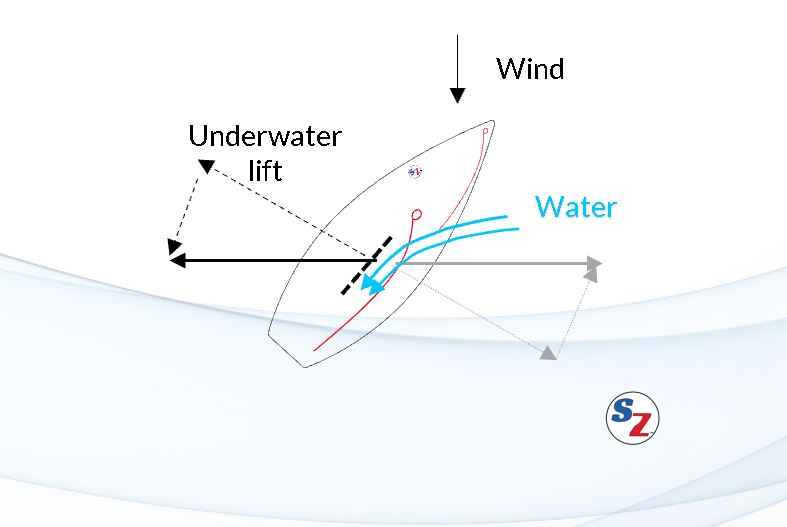
The forward and leeward motion creates lift and drag on the boat’s underwater surfaces (hull, boards, rudder), generating lift and drag.
The underwater lift reduces the slippage to leeward. However it can’t totally stop the slippage, because it needs some slippage to create lift.
The amount of leeway depends on how much lift the underwater surfaces generate.
Observing Leeway
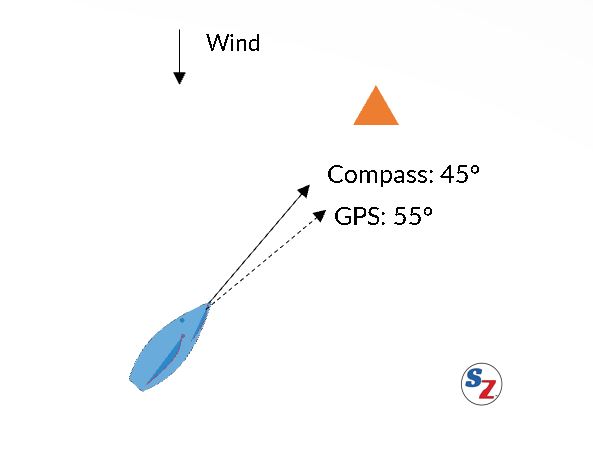
You should try to be sensitive to the amount of leeway your boat is experiencing. Normally, it’s not too noticeable, but you still should be aware of it, especially if it increases.
The easiest way to observe is to use a course mark or point on shore. If the bow is pointed towards the mark, you’ll soon see that your actual progress is taking you lower than the mark.
If your boat has instruments, you can measure your leeway by comparing your compass heading to a GPS-based bearing that measures your actual track through the water. In the case shown, what is the leeway angle? The answer is 10 degrees, which is the difference between the boat’s heading and its actual track through the water.
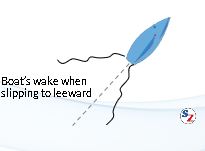
If you’re making a lot of leeway, you can see it by watching the wake off your stern. As the boat slips to leeward, the windward side wake is at a greater angle to the boat than the leeward side wake.
We can see leeway in the video of an X boat sailing on a windy, puffy day. Watch for indications that the boats is side-slipping, including the shore reference and the boat’s wake. Watch what happens when the boat heels up.
What factors affect leeway?

Most racing boats sail upwind in medium breeze with 3-5 degrees of leeway. The drawing shows a 5 degree leeway angle, which is pretty hard to see on the water. However, there are times when leeway increases and you should know the factors that cause it to increase.
- Boat speed. As the boat slows, there is less flow over the foils, and therefore less lift. The term foils includes the centerboard, leeboards, and rudder.
- Angle of heel. The foils are less effective when they are not vertical in the water.
- Waves or other pitching and rolling. If the boat pitches and rolls or the angle of heel isn’t constant, this disturbs the flow over the foils, which reduces lift.
- Poorly shaped foils. Some boats have foils are flat plates instead of being curved on both sides like a wing. Flat plates increase leeway will Increase. Just like airplane wings, curved surfaces generate more lift.
- Foil surfaces are not smooth. A rough surface generates turbulent flow and reduces lift to counteract leeway. So make sure your boards are clean and smooth.
- Mainsail is over-trimmed. An over-trimmed sail generates more side force increasing leeway.
Common Problems and Tips
Misjudging the layline.
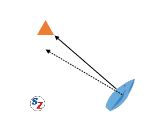
The most obvious problem is judging the layline. As the diagram shows, you have to go a little past the layline to account for leeway, or else you won’t be able to sail to the mark.
This becomes more difficult, the further away you are from the mark. That’s one of several reasons for avoiding the lay lines until you’re close to the mark.
You also have to worry about factors that could slow you down and increase leeway, such as disturbed air, or a decrease in wind strength. Also wind shifts will affect the layline, though shifts do not affect leeway directly.
Too much leeway
Too much leeway is another common problem. This is often the case just after the start, when your boat is not moving fast, or in light air when you’re not trimming properly. Here are some clues:
- First, the boat will feel slow. Remember, lack of speed makes leeway increase.
- A very frustrating sign is that boats that are sailing at the same heading are gaining to windward, even if they are in the same wind as your boat.
- You can also look at your telltales for a third clue. Often, if you’re going slow, the telltales on your stays will be pointing into the front of the sail rather than towards the aft portion of the sail. Another way of saying this is that your apparent wind is further aft than normal.
To reduce leeway you need to build speed and and you may also need to reduce side force.
- First, match your sail trim and heading to the apparent wind to get air flowing over the sails and build speed. This may mean easing the sheets or heading up if you’re over trimmed, or trimming in or heading down if you’re under trimmed. Do whatever it takes to build speed as soon as possible. Don’t worry abut the other boat’s heading until after you build speed.
- If you’re overpowered, you have to reduce the side force. Assuming you’re already hiking hard, you have to reduce power, either by flattening the sails with your controls – vang, cunningham, and outhaul – or by easing the sail momentarily to let it luff and spill power.
- Once you’ve built speed and your apparent wind starts moving forward (telltales point more to rear of sail) you can head up and your leeway will be back to normal.
Bonus Content: Rudder Angle and Leeway
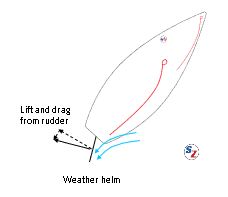
If you want to dig into the topic more deeply, here’s some more detail about how the rudder angle affects leeway.
The rudder also provides underwater lift to combat leeway. It also provides unwelcome drag. This is true even if the rudder is centered.
If your boat has weather helm, you have to pull the tiller slightly to windward to keep it sailing straight. Your rudder will feel extra pressure from the water flowing past it. This produces additional underwater lift and drag.
Some experts claim that a small amount of weather helm improves overall performance. There’s a sailing world article by Andy Horton that claims your leeway angle plus your rudder angle should add up to 5-7 degrees for best upwind performance. He recommends experimenting with boat tuning to find the best combination of leeway and weather helm.
I found data in the Buccaneer 18 tuning guide claiming to prove that three degrees of weather helm (rudder angle) improves upwind performance in winds up to 13 knots. Above 13 knots there is no advantage to weather helm.
On the other hand, several respected experts (Dave Ullman, Mike Ingham, Greg Fisher) firmly believe that a neutral helm gives the best upwind performance. They would say that the only reason for a slight weather helm is to help the skipper feel if the boat is powered up.
Whichever set of experts is correct doesn’t make that much difference. All experts agree that more than a few degrees of weather helm slows you down. Getting the other stuff right is more important.
SailZing Sail Trim Series – effects of sail trim on side forces.
Leave a Comment Cancel Reply
You must be logged in to post a comment.
This site uses Akismet to reduce spam. Learn how your comment data is processed .
Attainable Adventure Cruising
The Offshore Voyaging Reference Site
Sail Heel Angle
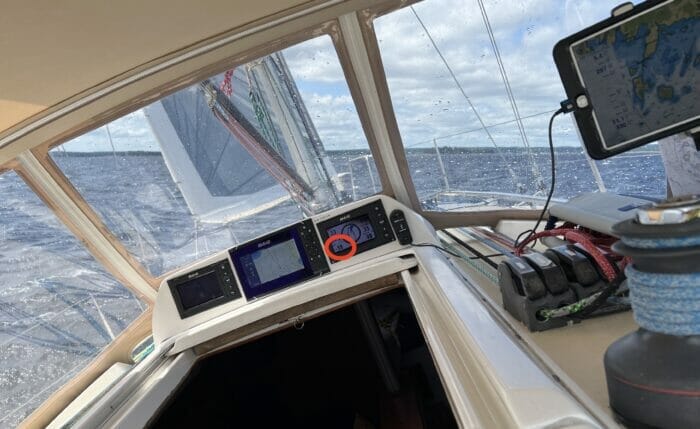
The late, great—I know it’s a cliché but he was— Buddy Melges , when asked how to drive a boat well upwind, would say that the secret is keeping the angle between the headstay and horizon constant.
For us lesser helmspersons, an inclinometer makes this way easier.
I was just about to fit one to our J/109 when I realized that the smart compass I installed last winter also measures heel angle and sends that out on the NMEA 2000 network, so it was just a matter of moments to add it to one of the cockpit readouts.
Once the boat is fully powered up, sailing a constant heel angle through the puffs and lulls is a way faster and more comfortable way to helm upwind than just following the jib telltails.
Excessive heel is also a not-so-subtle hint that it’s time to reef.
Nothing more than 20 degrees is fast on the J/109 , flatter with a full crew on the rail.
The M&R 56 is fastest up wind at about 23-25.
Boats that are not as easily driven will need more heel, and full-keel boats with a lot of wetted surface are often fastest at high angles—as much as 35 degrees.
That said, many people, particularly those new to sailing, let the boat heel too much.
Anyway, every sailboat should have a way to display heel angle. If your autopilot compass does not have this feature, a simple inclinometer will do .
Please Share
I have always spelled it “heel”, and merriam-webster seems to agree with that spelling. is heal a common spelling in the northeast?
No it’s a common spelling among dyslexics, of which I’m one! I will change it, thanks.
20 degrees is about right for modern, beamy boats, I’ve found. Once past that the underwater shape starts to tell and not in a good way. Reef early, reef often!
Good point, although the J/109 is not that beamy, and neither is the M&R 56, at least by modern standards, so I think a lot of being able to sail well at low heal angles is about keel efficiency and keeping drag low.
I was thinking about buying one of these https://www.airmar.com/Catalog/Marine/GPS-Heading-Sensors/GH2183
It outputs pitch and roll to the network so I guess you could read the roll as heel angle?
That sounds right, but I don’t know for sure. You will also want to make sure you can read that out on whatever MFD you have.
Agree that heel angle readout is great, as is rudder angle. Your compass should have trim too which is interesting both for long term and short term fore/aft weight distribution. Obviously the boot stripe will help with the former.
Great article. Key is knowing your boat. Learned very early back at summer camp sailing lasers as a kid it may seem faster sailing with the rails in the water but the leeway increases and your added rudder to over come weather helm slows your actual over ground speed. Same can apply to those rule bending IOR boats with big over hangs designed to heel early will sail faster as the water line increases as they heel but the optimal angle range is narrow as weather helm will increase and then leeway and drag starts to slow you down again. (Not to mention risk of a broach)
It is indeed about “knowing your boat”, and that can take time. One way to cut down the time and effort is to use the output of a VPP: that will provide the theoretical optimal Heel angle for the full range of TWS and TWA pairs. It usually provides a very good starting point. If you don’t have the data for your own boat, lookup the information for similar ones, they will provide useful trends and indications, which you can then adjust and refine. If you know your boat well, VPP outputs can still provide a healthy challenge for established habits and may point to performance opportunities.
Hi Jean-Louis,
I agree, knowing where success lies is really helps when learning how to sail a new-to-us boat well. I was fortunate that all that stuff came with out J/109, although it would have been fairly easy to find on the internet.
I discovered that those inclinometer have also a great psychological effect: once you can put a number on the heel angle, suddenly for most young crew (young to sailing a monohull) life is good. No more anxiety about 15-20 degrees heeling.
I bought the Sun Coorporation’s Lev-o-gauge SR model and stuck it on the bulkhead facing aft to my helm position. It works great, is damped very well and nice and clear. Downside it is a bit industrial looking. For my Rival 41C at 41′ LOA, 12.2′ beam and 5.9′ draught, 10 tonnes, deep forefoot and encapsulated fin, I find around 30 degrees I have too much weather helm, digging in the side decks and just a lot of drag. I tend to sail upwind around 25 degrees max and get all the drive I need. It is a neat tool to use, which gives that reference number to what was gut feel angle anyway. I have been using it for about 3 years now.
On my Sabre 34, the salon/cabin top had beveled sides, and I am told that the ideal sailing heel was when the beveled sides were horizontal.
I guess I would check that angle just to make sure what you were told is not another one of the many mythes that are prevalent around boats. Having sailed a Sabre 38 a lot my guess would be that the max efficient heal angle would be from 20 to 25% on your boat.
I would also install an inclinometer because visually gauging angle is difficult even if the cabin side angle turns out to be right.

M.B. Marsh Design
Understanding monohull sailboat stability curves.
One of the first questions people ask when they discover I mess around with boat designs is: "How do you know it will float?"
Well, making it float is just Archimedes' principle of buoyancy, which we all know about from elementary school: A floating boat displaces water equal to its own weight, and the water pushes upward on the boat with a force equal to its weight. What people usually mean when they ask "How do you know it will float" is really "How do you know it will float upright?"
That's a little bit more complicated, but it's something every skipper and potential boat buyer should understand, at least conceptually. (Warning: High school mathematics is necessary for today's article.)
A yacht at an angle of heel
Let's consider a boat at rest, sitting level in calm water. The boat's mass is centred on a point G, the centre of gravity, and we can think of the force of gravity as acting straight down through this point. The centroid of the boat's underwater volume is called B, the centre of buoyancy. The force of buoyancy is directed straight up through this point.
We now heel the boat over by an angle "phi". Point G doesn't move, but point B does: by heeling the boat, we've lifted her windward side out of the water and immersed her leeward side. The centre of buoyancy, B, therefore shifts to leeward.
The force of buoyancy, acting upward through B, is now offset from the force of gravity, acting downward through G. The perpendicular distance between these two forces, which by convention we call GZ, can be thought of as the length of the lever that the buoyancy force is using to try to bring the boat upright. GZ is the "righting arm".
If we draw a line straight upward from B, it will intersect the ship's centreline at a point called M, known as the "metacentre". (Strictly speaking, the term "metacentre" applies only when phi is very tiny, but a pseudo-metacentre exists at any given angle of heel.) The metacentric height is a useful quantity to know when calculating changes in trim and heel.
(Can't see the images? Click here for now , then go update your web browser.)
We can easily draw a few conclusions simply by looking at the geometry:
- The boat will be harder to heel, i.e. more stable, if GZ is increased.
- Lowering the centre of gravity, G, will increase GZ.
- Moving the heeled centre of buoyancy to leeward will increase GZ.
- If GZ changes direction- i.e. if Z is to the left of G- the lever arm will help to capsize the boat instead of righting it.
Stability Curves: GZ at all angles of heel
To prepare a stability curve, the designer must find GZ for each angle of heel. To do this, she must compute the location of B at each angle of heel, and determine the height of G above the base of the keel (the distance KG).
In the early 20th century, finding B at each angle of heel was an extremely tedious process involving a lot of trial-and-error, a lot of calculus, and days or weeks of an engineer's time. Today, this can be computerized, and takes only a few seconds once the hull is modelled in a CAD program. Finding KG, though, is still a tedious process: it can either be measured by moving weights around on an existing boat and measuring the resulting angle of heel, or it can be calculated by tallying up every piece of structure, ballast, equipment and cargo on the boat.
Once that math is done, the designer can plot GZ (or righting moment, i.e. displacement times GZ) over all possible angles of heel. This produces the familar stability curve:
All yacht skippers should be at least somewhat familiar with their own boat's stability curve, and it's a useful thing to study when buying a boat. To read the curve, we look at the following features:
- The slope of the curve at low angles of heel tells us whether the boat is tender (shallow slope) or stiff (steep slope).
- The righting moment at 15 to 30 degrees of heel tells us about the boat's sail-carrying power. A large righting moment indicates a boat that can fly a lot of sail; a boat with a lower righting moment will need her sails reefed down earlier.
- The maximum righting arm (or righting moment), and the heel angle at that point, tells us where the boat will be fighting her hardest to get back upright. If this is at a low angle of heel, we have a boat with high initial stability- she'll feel very stable under normal conditions, but a bit touchy at her limits, and relies on her skipper's skill to avoid knock-downs. If the maximum righting arm occurs at a very large angle of heel, the designer chose to emphasize ultimate stability- she'll be hard to capsize, but will heel more than you might expect in normal sailing.
- The angle of vanishing stability is the point where the boat says "Meh, I'm done" and stops trying to right herself. Looking at the diagram above, this means that Z is now at the same point as G. A larger AVS indicates a boat that's harder to capsize.
- The region of positive stability is the region in which the boat will try to right herself. The integral of the righting moment curve (i.e. the area of the green region) is an indicator of how much energy is needed to capsize her.
- In the region of negative stability , the boat will give up and roll on her back, her keel pointing skyward. The integral of this region (i.e. the blue area) tells us how much energy it'll take to right her from a capsize; if this area is relatively small, the waves that helped capsize her might have enough energy to bring her back upright.
Try it on a real boat
How does this apply to some real boats? Let's consider a 10 metre, 8 tonne double-ender yacht of fairly typical layout and proportions. The parent hull looks something like this:
Keeping her draught (1.5 m), displacement (8 tonnes), length (10 m), freeboard, deckhouse shape, etc. the same, we'll adjust the shape of the midship section to yield four boats that are directly comparable in all respects except beam and section shape. Hull A is a deep "plank on edge" style , hulls B and C are moderate cruising yacht shapes, and the wide, shallow-bilged hull D resembles an old sandbagger - or a modern racing sloop.
Now, assuming that G lies on the waterline (so KG = 1.5 m), we can compute the righting arm GZ as a function of the heel angle. If we multiply the righting arm GZ by the displacement, we get the righting moment.
Some immediate observations from this graph:
- The narrow hull "A" has relatively little sail-carrying power at low angles of heel, but will self-right from any capsize. Her good "ultimate stability" comes from using ballast to get G as low as possible.
- The wide hull "D" can fly a lot more sail, but if she goes over, she ain't coming back up. She gets her high "initial stability" from her wide beam, which moves the heeled centre of buoyancy farther to leeward.
There's a problem, though: We've assumed an identical centre of gravity for all four boats. That's not realistic. The deep, narrow hull will have her engine and tanks low in the bilge; the wide hull must mount these heavy components higher up. Let's reduce hull A's KG measurement to 1.35 m, and increase hull D's KG measurement to 1.65 m, a more realistic value. We'll scale KG for the other two accordingly.
The overall conclusions don't change much, but we now have some realistic numbers to play with.
- Hull A, the narrow one, will have a hard time flying much sail. She'll heel way over in a breeze. But she can't get stuck upside down.
- Hull B, a moderately slender cruising shape, also can't get stuck upside down- her AVS is 170 degrees. Her extra beam causes the centre of buoyancy to move farther to leeward when she heels, so she has more initial / form stability than hull A and can carry more sail.
- Hull C, which is typical of modern cruising yachts, has over twice the sail-carrying power of the slender hull A. She'll heel less, and since her midship section is much larger, she'll have more space for accommodations. The penalty is an AVS of 130 degrees. That's high enough that she can't be knocked down by wind alone, but wind plus a breaking wave- such as in a broach situation - could leave the boat upside down until a sufficiently large wave comes along.
- Hull D, the broad-beamed flyer, can hoist more than three times the sail of hull A at the same angle of heel. She'll be quite a sight on the race course with all that canvas flying. Her maximum righting moment, though, is only 37% more than hull A's, which leaves less of a margin for error- hull D is more likely to get caught with too much sail up, and will reach zero stability at a lower angle of heel. If she does go over, she has considerable negative stability, making it unlikely that she'll get back upright.
Work to capsize
If you're one of that slim percentage who paid attention in high school physics, you're probably looking at those curves and thinking: "Force (or moment) as a function of distance (or angle).... hey, if you integrate that, you get the work done !
And so you do, with the caveat that we're using a static approximation to a dynamic situation. The results are valid for comparison, but the actual numbers may not mean very much.
Let's do that for each of our hulls. We'll integrate the righting moment curve as a function of heel angle, up to the angle of vanishing stability, to get the work done to capsize the boat. We'll also integrate from the AVS to 180 degrees to get the work done to right the boat from a capsize.
Our four boats require roughly the same work to capsize! Changing the shape of the midsection affected the shape of the stability curve- a wider boat had more initial stability and less ultimate stability. In this case, though, our vessels are all about the same size and require about the same amount of work to capsize.
Righting from a capsize is another matter. The narrow, deep hulls A and B will self-right without any outside influence- a nice confidence-booster if you're heading into the open ocean, although the reduced sail-carrying power and limited interior space of these vessels will probably be more important to most skippers.
The moderate cruising hull, C, needs a bit of help to self-right, but any combination of wind and waves that can do 95 kN.m.rad of work on the boat is likely to produce a wave that can do 10 kN.m.rad of work on that same boat.
Our broad-beamed racer, hull D, is not so fortunate. Righting her from a capsize takes one-third the work that capsizing her in the first place did, and her acres of canvas were probably a major factor in the initial capsize- they're now underwater, damping her roll motion instead of catching the wind. The odds are that this boat will stay upside-down until someone comes along with a tugboat or crane.
Lessons Learned
What's the take-home message from all this?
If you're buying a new boat: Look at her stability curve, and compare it to other boats.
- Good: Large region of positive stability, small region of negative stability, high angle of vanishing stability, steep slope at low heel angles.
- Iffy: Shallow slope at low heel angles (makes it hard to fly lots of sail, excessive heeling when underway).
- Risky: Low angle of vanishing stability, large region of negative stability.
If you already have a boat:
- If you know her point of maximum stability, you can be sure to reef the sails well before that point.
- If you know her AVS and the shape of the curve in that region, then when a broach or knockdown happens, you already know how hard she'll fight to come back upright.
- If you know how much area is covered by the negative stability region of the curve, you'll have some idea of whether she'll come back from a capsize on her own or else have to wait for help.
- Determine if anything you've changed- a dinghy added on the deck, perhaps- has moved the centre of gravity.
- If G has moved, adjust your mental model of the stability curve accordingly: just shift the curve up or down by (change in height KG) * sin(heel angle).
Confounding Factors
What we've discussed here is just about how to read the stability curve- it's not a complete picture.
There are many other factors that must be considered to get a complete understanding of a boat's stability. Among them:
- Dynamic effects. Everything discussed so far is for the static case, and is good for comparison purposes. But in practice, boats move.
- Waves. Stability curves are calculated for flat water, ignoring the effect of waves.
- Differences in rigging. Weight aloft has a much larger effect on the boat than weight down low- particularly where the roll moment of inertia, an important property for dynamic stability, is concerned.
- Keel shape. Keels tend to damp rolling motion; this behaviour is quite different with a long keel than with a fin keel, or with a fin keel underway versus a fin keel at rest.
- Downflooding. Everything we've discussed here assumes that the boat is watertight in any position. If she takes on water when rolled, everything changes.
- Cockpits. Our demonstration boat doesn't have a cockpit. A large cockpit could hold several tonnes of water- and with a free surface, no less. That means that G will move all over the place, usually in the wrong direction.
Further Reading
Steve Dashew's article " Evaluating Stability and Capsize Risks For Yachts ", and others on his site, discuss stability-related risks as they relate to cruising yachts.
Technically-minded readers should refer to a naval architecture textbook, of which my present favourite is Larsson & Eliasson "Principles of Yacht Design" (McGraw-Hill).
Don't even think about buying a cruising yacht without first reading John Harries' extensive series of articles on boat and gear selection .
Topic:
- Boat Design
Boats:
Great stuff.
A really great piece, thank you. You have the very unusual gift of being able to make complex issues easy to understand.
Other confounding factors
One major confounding factor which most English-speaking designers still seem to routinely dismiss, or overlook, is to do with the nature of knockdown lever moments in a 'survival storm' situation:
You specifically state you're not taking waves into account, so this is addressed at those who do, in the conventional way -- generally led by the insights of academics and researchers tracing their conceptual methodology back to the likes of Marchaj.
The lever moments I'm thinking of arise from the vertical offset between: Where the wave force vector acts, and Where the hull resistance vector is located.
It has long been contended by the school of expedition yacht designers, going back to around the days of Damien II, from France in the 70s, that the greatest risk ... and arguably the only one worth worrying about for such vessels ... was due to the tripping moment caused by the vertical offset between the centre of effort of a true breaking wave, and the centre of resistance of the hull AND UNDERWATER APPENDAGES
When a large ocean wave breaks entirely forwards, the part which was formerly the crest avalanches down the front of the wave. Admittedly this behaviour is VERY rare offshore - where almost all 'breakers' actually spill most of the water down the back, but it's these events which present a real survival threat, and which define the limits to a vessel's capability.
Unlike the water particles in the body of the wave, which are circulating in the well known way of text book diagrams, and effectively not going anywhere over time, this "former crest" water has escaped from the wave system and is travelling rapidly under the influence of gravity down a steep ramp whose geometry (as opposed to constituent particles), in the case of a Southern Ocean wave of truly heroic proportions, might itself be advancing as fast as 30 to 40 knots.
So we have an aerated but still rather massive entity tumbling down above this already very fast moving ramp, hitting the topsides and cabin coamings, in the worst case, perpendicularly.
The contention of the French school was that, in this situation, while a high freeboard is clearly undesirable, the absolute last thing you want, which trumps everything else, is deep appendages providing lots of lateral grip, situated down in green water. This would provide a lever arm converting the sideways impulse (which is at a height not very far from the centre of mass, and hence not inherently an insuperable problem) into a very dangerous overturning moment.
The insight was based on simple empirical observations, such as of a flat wooden plank, or a surfboard with no appendages, floating side on to breaking waves at a surf beach. Despite having no ballast whatsoever, and a zero GZ in the plank case, this will sideslip down those waves and stay happily the same way up, in conditions where (say) a windsurf board with a deep centreboard (whether ballasted or not) will be tumbled repeatedly.
They reasoned that the thing to avoid at all costs, for a well found expedition yacht, was a knockdown with an angular acceleration sufficient to snap the rig.
This turned everything on its head with regard to the conventions of stability calculations: the relative positions of the centre of mass and the centre of buoyancy become largely irrelevant: the former should if anything ideally be high, so the vector from the striking crest passes through or near it, (to minimise the inertial overturning moment) while the latter is almost irrelevant because on the face of such a steep wave, the hull is in virtual freefall, and the hull is largely disengaged from green water. Aerated water offers little buoyancy.
This is so divorced from statics (which are arguably most useful for calculating how to prevent ships capsizing at a dock) that it is a shame to see so much reliance on static measures persisting to this day, in educating sailors, defining ultimate seaworthiness, and framing regulations and recommendations.
Be that as it may: this insight led to a completely different school of storm management by the adventurous people who sailed off to places like the subAntarctic and Antarctic in the new generation of beamy, generally low-freeboard # hulls, equipped with swing (or even dagger) ballasted keels capable of retracting - in many cases - right within the canoe body.
# ideally, no cabin trunk - which on the face of it is bad for self-righting...
In survival conditions, these sailors began retracting these keels, even though on the face of static stability calcs, this is entirely wrong. And (AFAIK*) not one of these yachts has yet been lost in the deep south, despite them making up the majority of the fleet, and I'm not even aware of a single 180deg knockdown to such a vessel configured in this way.
There have been, and continue to be, numerous knockdowns and dismastings of fixed-keel yachts designed to the other, older paradigm.
*(The first two losses of private expedition yachts in Antarctic waters both occurred within the last two years, and neither was a vessel of this type)
So even if these sailors are not right, they're clearly not VERY wrong.
Re: Other confounding factors
You are quite correct that when you are facing breaking waves, static stability analysis is not going to show the whole picture. Being caught in large breakers is certainly one of the highest-risk situations a yacht can face.
The "let it slide sideways" approach can have considerable merit in such a situation, if the boat is designed with this in mind. On a monohull sailing vessel, this calls for a retractable keel and a canoe body with relatively little lateral resistance of its own. If you do this, of course, you also have to ensure that the vessel won't trip over the leeward gunwale when she's surfing sideways with the keel retracted. There are plenty of good, seaworthy vessels out there with such a configuration.
The price you pay for doing it that way is that it's harder to right the boat if she does capsize. Frankly, though, I would rather not capsize in a non-self-righting boat than be upside-down in one that will eventually get herself back up. There are tens of thousands of catamaran sailors out there who would seem to agree.
This is not to say that static stability traits are not important: they certainly are. Given two vessels of generally similar configuration, the stability curves will tell you quite a lot about what kind of behaviour can be expected from each.
Static stability curves are certainly not the whole picture. There are several important dynamic aspects- the lateral resistance effects and the roll moment of inertia, among other features- that can have a huge effect in extreme situations. I'll discuss these in more detail in future posts.
I am thinking about. Buying a
I am thinking about. Buying a 38 foot guimond lobster boat. I am thinking Of widening the stern to 10 feet from 8 ft 8 in. Also I want to add some fiberglass to the keel to make her a little deeper maybe 36 in from present 32 inches. Should I make the new hull water line 90 degrees? Will this be better than a round traditional edge? Should I add bilge keel fins for more stability?
Modifying a design
The kind of modifications you're describing are fairly extensive. You would be wise to arrange a meeting with a naval architect, or with a builder who has extensive experience with that type of boat. With the boat's drawings and a good description of what performance characteristics you want, the professional will be able to assess what modifications (if any) would be appropriate- or if you'd be better off choosing a different design from the start.
Stabilty of Twin Keel Monohulls (Bilge Keel)
Wondering about the stability of bilge keeled sailboats, specifically the Snapdragon 26. How does a second keel affect relative stability of this kind of vessel? Any thoughts appreciated.
Static stability is determined by the hull shape and by the distribution of mass, i.e. the centre of gravity. Two identical hulls, one with a single fin and one with twin keels, will have approximately the same stability curve if they have the same centre of gravity. The twin keel configuration is usually chosen to allow shallower draught, though, so the centre of gravity will often be higher than for a single-fin boat.
There is a significant performance sacrifice with this configuration. A higher centre of gravity reduces the sail-carrying ability, the lower aspect ratio foils are not as efficient to windward, and the extra wetted surface increases drag. The flip side is that you can safely dry out at low tide in places where most monohulls would never be able to go.
Ultimately, though, the keel configuration is a fundamental part of a design, and there's no real answer to "How does a second keel affect stability". It's the performance of the entire boat that matters, and unless you have two boats that are identical except for keel configuration, it doesn't make much sense to separate out this one aspect of the design. The class's performance record and the experiences of skippers who have sailed that class in bad weather are better ways to assess the relative seaworthiness of an existing design.
Stability Curves for Hunter 34
I'm french and it's not that easy for me to understand all of this but here is my question:
Do you know who I can contact to know the stability curves of my sailboat. It's a Hunter Sloop 34' 1985
I asked directly at Marlow-Hunter, they said they don't have this information.
Someone told me that Hunter Manufacturer has it and that I can have it for some dollars but it seems that this is not the case.
Can you help me?
Tracking down data for old boats
Danielle, if I'm not mistaken, that Hunter would be one of Cortland Steck's designs. There's a chance that he might have the data you're looking for.
Stability curves are incredibly tedious to calculate without a computer, though, so many- if not most- boats designed prior to the advent of modern 3D CAD never had one calculated at all. It's possible to build a computer model of an existing boat and calculate the required data, but for most practical purposes you can find the important information through an inclining experiment. This essentially consists of moving known weights around the boat and measuring how she heels in various load conditions, and it's one of the more common ways of measuring stability data for an existing vessel in commercial service where all of these details must, by law, be properly measured and documented.
Righting a Capsized Vanguard Nomad 17
I read on the web that it takes 420 lbs of crew weight to right a capsized Nomad. Is that true? I weigh 135 lbs and I sail single-handed. It's now November and the water is getting too cold to find out.
Re: Righting a Capsized Vanguard Nomad 17
Gerardo, A 625 pound boat with a beam of 8 feet is not going to be an easy thing to right. You might find Sailing World's article on the boat interesting. They were advised by the manufacturer's rep that the boat can't be righted by one person in the way that you'd right something small like a Laser. But if you flood the tank (through the spinnaker well) on one side, you'll be able to roll her far enough to pull her back up like a dinghy, and then drain the tank again. I agree that you would NOT want to test this in November!
37 Foot Sailboat
I am from the Maldives in the Indian Ocean. I am building a fiberglass sailing yacht using local boat builders. Its 37 feet and 11 feet with a long keel of 3 foot deep. And will use concrete in the keel. They will be putting 9 fiberglass mats. Interior and the bulkheads will be done using marine plywood. The hull is going to look more like a Fisher 37. And the cabins like a Nauticat. I am intending to use ketch style two masts. I was surfing the internet and am trying to understand what are the issues that I need to take into consideration. Your explanations is very helpful. I am just wondering whether you will comfortable if I communicate on this topic. Thanking you.
Re: 37 Foot Sailboat
Ahmed, it's good to have you here and feel free to chime in on relevant threads, or to contact me directly. It's always neat to see what everyone else is building.
Help with stability estimate
Matt, I found your article very informative, good stuff! Where might you think my vessel Crusoe might fit A thru D. 57' O.L. 13' beam-25 tons-4.5 ton ballast lifting keel. Here is the vessel: http://yachthub.com/list/yachts-for-sale/used/sail-monohulls/pilothouse-... thanks, Thomas
To summarize, in very general terms: Category A is an offshore-capable yacht. Category B is a coastal cruising vessel, able to handle weather at sea but not recommended for extended offshore use. Category C is a short-range inshore vessel that is expected to take shelter rather than facing a storm out in the open. Category D is a small, fair-weather vessel such as a skiff or dinghy. The static stability properties are the main factor that determine which category a particular boat design is intended to fall in. But, in addition, the builder must comply with dozens of requirements for structural integrity, watertightness, emergency equipment, etc. for the boat to actually fall in that category. It's quite possible for a boat designed for Category A to end up being a Category B vessel because of corner-cutting during the build.
Assessing Southerlies and Tayanas
Would you care to give an opinion on the Southerly Yachts with retractible keels and twin rudders, also on Tayanas as to seaworthiness and construction. Thank you
Southerly & Tayana
I don't have first-hand experience with either of these marques, so I'm afraid I can't offer much that's meaningful.
Southerly tends to have a fairly good reputation. You do pay a fairly substantial premium for the complicated retracting keel, but there are some cruising grounds where the only options are a retractable keel or a multihull.
The Tayana line has produced a mix of models from several different designers, some very traditional, rugged and slow, others relatively modern. I'd have to know exactly which one you have in mind to say much more than that.
Your best bet for meaningful data on either line would be to prowl some forums looking for the owner's club for each marque. Yacht owners generally love to talk about their yachts, and if you're patient, you can usually find most or all of a particular model's weak spots by asking owners how they handle rough weather and what they've had to fix or replace so far.
I really enjoyed your article
I really enjoyed your article. I'm trying to make a stability model myself and I was interesting in the equations you used to find GZ as a function of heel angle and then how you found the displacement. I'm also interested in how you calculated the different curves for the different hull designs. Any pointers would be greatly appreciated. Thanks!
I'm not sure if I mentioned
I'm not sure if I mentioned it in my last comment, but I'd also like the equations for getting the displacement you multiplied GZ by. Thanks!
Sources for calculations
Hi Cole, Finding the displacement from the lines is pretty easy. If it's a CAD model, just find the volume; if it's a 2D drawing, find the area of each of the stations and use Simpson's rule to integrate over the waterline length. Finding G is just a matter of adding up the weights and moments for every component of the ship - each frame, the hull planking, the engine, each piece of hardware, and so on. Finding GZ for a given heel angle is relatively tedious, but it's essentially the same procedure (find the station areas, integrate over the waterline length, find the station centroids, weight the centroid offsets by station area to find the CB). There is an iterative step here as you must adjust the waterline position to make the displacement the same as in the at-rest case. For practical purposes, though, virtually everyone computes their stability curves using a proven software tool like Orca3D or ArchimedesMB. The actual calculations are described in detail in most good yacht design textbooks, eg. Larsson & Eliasson's "Principles of Yacht Design".
Stability of Chinese Junk Hull
Hi Matt, Your article is very informative. I am studying the feasibility of building a wooden ocean going Chinese Junk. History recorded that there were huge junks sailing 600 years ago in Zhenghe's days. The latest record for a large junk sailing across oceans is the Keying which sailed from Hong Kong to New York and London in 1848. She is 160ft LOA, 33ft BEAM and 13ft (rudder up) 23ft (rudder down) DRAFT, 700-800 ton DISPLACEMENT. As it is too difficult to re-build a wooden junk of such size, I am studying the record of fishing junks built about 30 years ago. A junk capable of sailing in force 8 wind. She is 23m(75.4ft)LOA, 5.66m BEAM, 1.69m(DRAFT), 1.2m(FREEBOARD), 138000kg (DISPLACEMENT). There is a dagger board extending 2.5m from the bottom, located about 1/3 waterline from the bow in front of the main mast. The rudder can be raised in shallow water. It is perforated with an area of 6.7sq.meter. The bottom is almost flat. The design of junks were evolved from generations of experience without scientific verification. I am surprised that the length and beam is so close to Volvo 65, but the displacement is 10 times those of Volvo. I am wondering if a flat bottomed boat is stable in rough ocean condition until I read the comment by Andrew Troup in 2012 about a boat without appendages can surf safely on the steep slope of the waves. I am glad if you can shine some light on the stability of traditional Chinese junks. John Kwong
Chinese Junk
A hundred and thirty-eight tonnes on 23m LOA? Yowzah, that's quite the boat. There's nothing fundamentally wrong with a relatively flat bottomed shape, or with retractable appendages. The risk of a flat bottom is more to do with slamming and pounding, which is much less of a problem in a heavy boat. Before investing hundreds of thousands of dollars in such a boat today, it would certainly be prudent to have the design drawn up and analyzed with modern software tools. There are certainly improvements from the last 50 years that could be applied to a much older design. A six-century pedigree is nothing to sneer at, though, and the fundamental design - updated with some modern construction techniques and with the added confidence of a full stability analysis - might still be a good one.
Relative locations of G and B
Hi Matthew. Thanks for such an interesting and informative article. Most diagrams show B below G so I guess this must be the most usual arrangement. However, I wondered if there might be a class of yacht (lightweight but with deep bulb keel) where G moved below B. I guess this would give a very good static G-Z curve (but I note also the comments made by Andrew (above) re dynamic stability that this might not be the best design to go winter sailing in the Southern Ocean!)
Monocat Hull
Matt what would you think this Monocat 50 Hull Form (see link)? Its a very different design- Monohull at the Bow, Catamaran at the Stern, 2x Lift Keels, One Ballasted, the other Forward non ballasted dagger board. I just cannot find information on it anywhere? I'd assume it would have similar characteristics to a very beamy monohull and thus would not self-right from a knockdown!? This is what im wanting to find out, will it self-right & is it safe offshore? Mashford Monocat 50 15.24m LOA 5m Beam 3Ton Ballested Lift Keel 0.8m - 2.1m
(there is a cad drawing of its underwater hull design in this advert) NB: Unfortunately your Spam Filter will not let me paste the link, but if you search the internet for MASHFORD MONOCAT it comes up for sale everywhere.
Ive been trying to locate the Designer Chris Mashford with no luck? feel free to email me too any info, cheers. Mal
Mashford Monocat
I'm not too familiar with the Monocat. My educated guess would be that stability-wise, it'll be much like a "skimming dish" racer - very stiff and powerful at first, hairy at the edge, and not self-righting. I'd have to sail one to be sure, but I have a suspicion that it could have the worst of both worlds - the relatively high drag and the ballast burden of a mono, with the complexity and high sailing loads of a cat. The main appeal seems to be the huge living space in a relatively modest beam, suggesting it's meant for short-term coastal cruises and charter work. Reliable reports on them seem to be very hard to come by, I suspect they weren't built in large numbers.
Great article! Thanks. My question is on actual statistics of vessels that have actually capsized. Understanding that this would likely be under reported, it would seem fruitful ground to examine questions of which static or dynamic factors pan out and are predictive for hulls that ended up upside down, and the stories behind them?
Does such a database exist?
reason for knowing the departure gm
Sorry I am bringing in a different topic entirely . pls I have read most of your articles and I have found them to be very useful . Pls I really want to know the importance of knowing your departure gm before commencing on a voyage... thank you
downflooding
Hi Matthew - I was reading your blog just now on Aug 23. I wanted to know how intake of 450l water affected the stability of a 9000kg / 41ft sailing yacht that I was skippering in a force 9 storm around Dover on Aug 3rd 2017. We encountered rather high waves of estimated 7m and had 52 kts apparent wind, which may have been the beginning of a force 10, because we did only 4kts through the water under storm jib and 3x reefed main. Once safely parked in Dover, we pumped 450l water out of the boat. Floorboards were floating... Any idea how that amount of water may have affected stability?
Kind regards
Martin Lossie
Calculating a stability curve
You mentioned calculating stability curves is tedious, and mostly done with CAD these days. I'm a new owner of a 1969 Columbia 26 Mk II and would love to understand the stability curve for my boat. A few enterprising owners have rescued the blueprints of this boat and placed them online, so I have the measurements available. Are there folks out there willing to do the CAD work to create the curve? Otherwise, what would be the easiest way for me to get one created for my boat?
Thanks for a GREAT article explaining this concept!
Add new comment
More information about text formats
Filtered HTML
- Web page addresses and e-mail addresses turn into links automatically.
- Allowed HTML tags: <a> <em> <strong> <cite> <blockquote> <code> <ul> <ol> <li> <dl> <dt> <dd>
- Lines and paragraphs break automatically.
- No HTML tags allowed.
Or, by topic:
- Log in using OpenID
- Cancel OpenID login
- Request new password
Boat Reviews
- Boats Specs
- Marine Pros
- Boat Insurance
- Boat Warranties
- Boat Transport
- Boat Towing
- Marine Forecasts

Your Ultimate Boating Resource

What is the appropriate degree of heel for a sailboat?
As a sailing enthusiast, it is imperative to understand the proper degree of heel for your sailboat. Heel angle refers to the degree of sideways tilt of the boat in relation to the water surface. It varies depending on different factors such as wind speed, sea state, sail plan and boat design.
The appropriate degree of heel for a sailboat is essential for safety, speed, and comfort. Generally, sailboats are optimized to perform best when they are slightly heeled to windward. This position allows the sails to catch the wind most efficiently and propel the boat forward while reducing resistance to the water. However, a sailboat that is heeled too much can reduce the performance of the boat, make it unstable or even capsize.
For most sailboats, a heel angle of around 10° – 15° degrees is commonly used. This range of heel enables the boat to maintain a good balance while also allowing the sails to catch the wind effectively. Nevertheless, it is possible to heel at a greater angle of up to 25° on larger boats with higher stability levels. However, heel angles over 25° should be avoided, or else the boat’s performance and stability may be compromised, and the risk of capsizing increases.
Several factors may affect the appropriate degree of heel for a sailboat. One of the most significant variables is wind speed, with stronger winds leading to greater heeling angles. The sea state also plays a role in determining the right heel angle, with choppy waters requiring a higher degree of heel. The sail plan and design of the vessel also affect the appropriate heel angle. Smaller boats with fewer sails may require lower heeling angles compared to bigger boats with complex sail plans.
Determining the appropriate degree of heel for a sailboat may vary depending on different circumstances. Nonetheless, maintaining a heel angle between 10° – 15° is considered the optimum range for most sailboats. It is essential to pay attention to factors influencing the ideal heel angle, including wind speed, sea state, sail plan and boat design. By maintaining the right heel angle, you can ensure a comfortable, safe, and speedy sailing experience.
Related Questions
What type of wood is used for pier pilings, what is the difference between a dock and a floating pier, what is the proper technique for pulling a beginner wakeboarder, what does ‘no wake’ mean on a lake, what is the difference between wash and wake, is wakesurfing possible in the sea, why don’t wooden piers rot, what size wakeboard is needed, how to achieve more pop on a wakeboard, does wake surfing translate to ocean surfing, latest posts, overview of the 2024 sea-doo rxp-x 325, overview of the 2024 parker offshore 2900 cc, what your boat’s beam is and why it matters, power cats of 2024: ultimate guide to the top power catamarans this year, don't miss, our newsletter.
Get the latest boating tips, fishing resources and featured products in your email from BoatingWorld.com!
Navigating the Heat: 10 Safety Tips for a Safe Boat Ride in the Summer Heat
Highs, lows, and tidal know-how: a deep dive into ocean currents, 10 essential tips for fishing near private property, the benefits of using a drift sock: guidance for anglers, lure fishing: secrets for imitating live bait and attracting fish, explore the untapped depths of america’s best bass fishing spots, outboard motor maintenance: tips for keeping your engine in top shape, the essential boat tool kit: tools every boater needs, diy boat building: 8 tips and tricks for building your own vessel, the art of miniature maritime craftsmanship: ship in a bottle, antifouling paints: a guide to keeping your boat shipshape, beginner’s guide to standup paddle boarding: tips and techniques, boating for fitness: how to stay active on the water, kayak safety: how to stay safe on the water, anchoring in a kayak or canoe: how to secure your small boat, overview of the 2024 yamaha 252sd, overview of the 2024 tiara yachts 48 le, overview of the 2024 bass cat jaguar sts, 2024 pursuit os 445: an overview, 2024 aquila 47 molokai review, 2024 sea-doo switch 13 sport review, gear reviews, megabass oneten max lbo jerkbait review, fortress anchors fx-7 anchoring system review, fortress anchors fx-11 anchoring system review, fortress anchors commando anchor kit review, fortress anchors aluminum anchors review, stay in touch.
To be updated with all the latest news, offers and special announcements.
- Privacy Policy
- AROUND THE SAILING WORLD
- BOAT OF THE YEAR
- Email Newsletters
- America’s Cup
- St. Petersburg
- Caribbean Championship
- Boating Safety
- Ultimate Boating Giveaway

Steering Techniques For Different Winds
- By Steve Hunt
- Updated: October 12, 2021
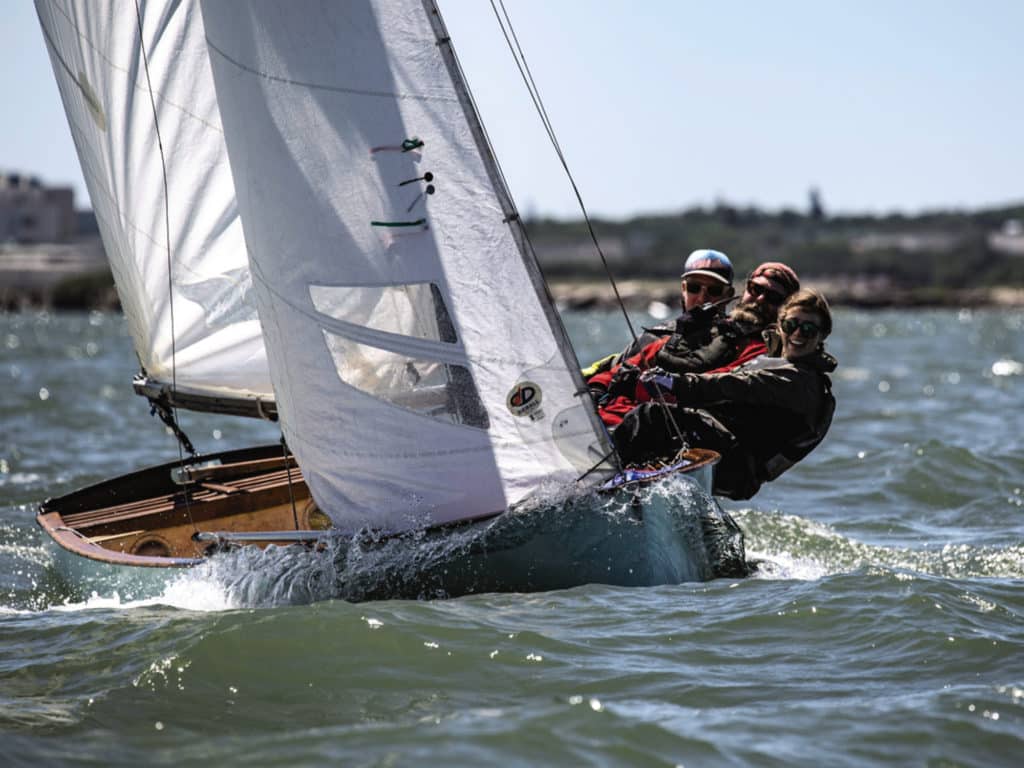
It’s good to have rules of thumb to help you sail the boat as fast as possible in all conditions. Such guidelines can help the skipper drive their best and give the crew a common purpose in how they react to changes in wind. One distinction that can help you increase speed is to identify if you should be telltale or heel-angle sailing. In lighter winds, telltale sailing is appropriate—the skipper works hard to stream the telltales at all times for maximum speed, and the crew moves around to create perfect heel. In overpowered heel-angle sailing conditions, the skipper can steer much more freely, focusing on a consistent heel angle while the crew hikes hard. In light air, it’s all about maintaining speed; in breeze, it’s all about the heel angle.
Underpowered Conditions
Here, the crew controls heel angle and the skipper sails exclusively to the telltales. The goal is to stream the telltales, setting up the boat for maximum speed. The heel angle is totally on the crew, and it’s best if someone can communicate the power in the boat—maybe the skipper or mainsheet trimmer—to help coordinate the team’s movements. If it’s really light, you might be heeling the boat a little extra to leeward, and just how much needs to be communicated to the crew so the boat feels as good as possible.
In these light conditions, the jib trimmer should be to leeward playing the jib. If shifts come or the skipper needs to sail deeper to gain speed, the jib trimmer is right there to trim or ease, depending on the situation. The main goals the skipper is trying to achieve are sailing straight and keeping max speed. To allow that to happen, the crew moves to keep the heel angle perfect while the jib trimmer adjusts the jib.
For example, if there’s a wave set coming, the jib trimmer eases the jib while you bear off slightly. The bow down and coinciding jib ease keep the telltales streaming. The same thing happens if the boat suddenly slows—bow down and jib out to keep the telltales streaming. If the boat starts to feel great and the skipper can head up, the jib trimmer trims the jib with the turn to keep the telltales streaming perfectly.
Going straight, as opposed to heading up in a puff, or bearing off to pick up speed really connects the wind to the jib. Ideally, it never stalls. Some people call it “pressing” or “sailing fat” on the jib. Either way, you’re creating power, and that’s where the boat feels best. If the leeward telltales start to luff, the jib trimmer eases the jib a little to make the telltales stream rather than having you heading up. If you head up for heel-angle sailing in light winds, you end up pinching, and it really slows the boat. In a small puff, it’s much faster if the crew hikes against that power while you continue to sail straight.
During this light-air mode, the crew should be fully focused on moving around to keep the boat at the desired heel. When a puff hits, they should move to the high side quickly and smoothly to keep the heel perfect, and when the breeze dies, they should slide in. A slow-moving crew encourages the skipper to head up in puffs and bear away in lulls, which wastes power in puffs and height in lulls, and reduces speed. A well-coordinated team in light air is very fast—skipper sailing fast, jib trimmer working the jib, and crew super-concentrated on the perfect heel. Because it’s fast to have the jib trimmer play in the jib in lighter winds, the first person off the rail in a dying breeze should be the jib trimmer. They are much more effective to leeward, with a perfect view of the jib.
Building Breeze
Now the crew is starting to get up on the rail. They’re not yet fully hiking, but everyone’s on the high side. You trim the sails in a bit, the jib trimmer is on the high side, and the jib is cleated. The boat’s feeling pretty good. Now you can start sailing a little more to heel angle, which means steering up a bit in the puffs. The main trimmer is in the loop here as well, helping the skipper keep the boat at the correct angle of heel.
Keep in mind that, if there’s chop or waves, the boat is reaccelerating all the time, so you might not be able to pinch so much in the puffs in these conditions. You might be telltale sailing still if it’s real bumpy, so when you get a puff, the crew should hike and trimmers should ease the main or depower in some other way, depending on your boat—traveler down, backstay off, whatever you’re playing to keep the boat on its feet and keep speed through the chop.
In flat water, it’s fine to head up in the puffs a little to keep the heel angle down, raising the forward inside jib telltales to 45 degrees or so. As a rule, head up just enough for a little telltale lift when needed and encourage the crew to hike hard. Briefly pinching buys you time to depower and get the crew hiking, all the while keeping the heel angle perfect.
Overpowered Conditions
This is true heel-angle sailing. The breeze has built to the point where everyone’s fully hiked, and you’re easing the main or dropping the traveler to keep a constant angle of heel. The crew has essentially become ballast, and they are hiking as hard as they can. As long as the boat’s moving at a decent speed, you can head up as much as you need to keep the boat flat. In a big breeze, you might even luff a foot or two of the front of the jib when a big puff hits until you get sorted with easing the main, tightening the backstay or whatever you’re doing to depower. You’re going so fast and having so much power (too much) that sailing that high is fine.
A few years ago, when I was sailing my Etchells—just my third regatta after buying it—the breeze quickly increased, and we were overpowered. I headed up to keep the boat from heeling too much, bubbling the front 6 inches of the jib, and my main trimmer said, “Awesome mode! We’re flying!” And I was thinking, “What? I’m waiting for you guys to depower the boat so I can put the bow back down.” But I looked around, and we were higher and faster than everybody. We experimented with flattening the main and getting the bow down to stream the telltales, but it was not quite as good. That day we learned a new mode—that we could luff the jib in breeze and we’d go just fine. The main point here, though, is that in heel-angle sailing, the skipper should steer up to avoid heeling.
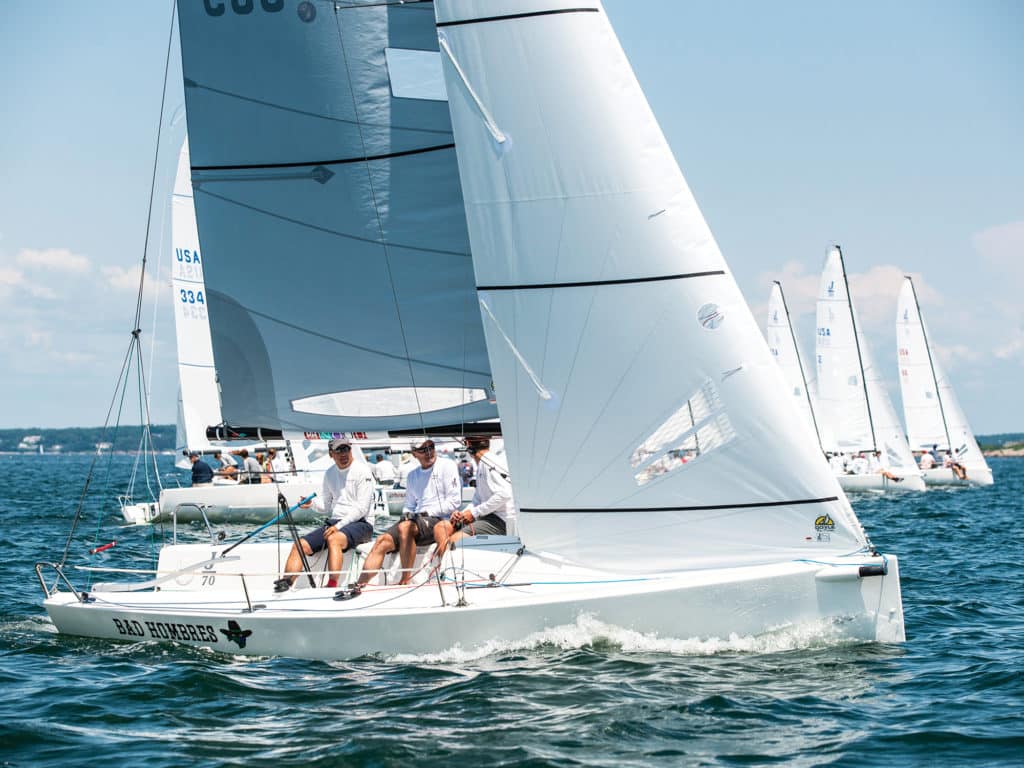
If it’s breezy but the water is flat, you can pinch a little more because there are no waves to slow the boat. If you’re sailing in waves and pressing on the telltales to go faster, constantly trying to accelerate, watch for flat spots. Every surfer will tell you that waves come in sets and in different shapes and sizes. Even on wavy and choppy days, there will be 5- to 15-meter circular spots that are pretty flat. Some sailors call them plateaus. If you enter a plateau and get a puff, try to feather or pinch. In general, you’ll probably be able to sail little higher than when in the bumps. Just before the waves return, drop the bow down, depower, and go for speed. In those conditions, you’re shifting back and forth between slightly bow down and true heel-angle sailing based on waves or flat spots.
The art of driving well comes after you understand everything we’ve been talking about, but then throw in the presence of shifts. Steering well suddenly becomes a moving target as you try to keep the boat at the perfect angle to the wind and coinciding perfect heel while the wind is shifting.
When that’s the case, here’s a good rule of thumb: If a puff is approaching from directly in front of you, it will most likely be a header. If it’s coming from your windward side over your shoulder, it’s most likely a lift. Knowing this can help you drive and trim the sails more accurately when they hit. The goals—maintaining a constant angle of heel and good speed—are the same, and if you can follow the shifts up and down while accomplishing that, you can really sail away from the fleet. For example, you get a nice-size puff that overpowers the boat. Normally during heel-angle sailing, you would head up to keep the heel the same. But if the puff is a header, you continue steering straight, the front of the jib bubbles, and everything works out fine. The shift helped you pinch without having to steer.
Conversely, again in a big breeze, you get a big puff, and it’s a lift. You understand that in overpowered conditions, a puff that’s also a lift is really going to knock you over. That’s because all of the sudden you are tight reaching, the opposite of pinching. It’s as if you bore away in a big puff, causing the boat to heel more. Rather than getting knocked over, good teams will “burp” the sails an extra amount right from the start, and the skipper will start heading up quickly and steer more than normal. That will help avoid the excess heel angle. At that moment, the main trimmer must ease the main a lot, and if the jib trimmer can ease the jib as well, or maybe the inhauler, even better.
On a J/70, for example, the jib trimmer might be inhauling the jib by bow-stringing the windward sheet on the high side, pulling the clew toward the mast. In that lift and puff, easing the windward sheet moves the jib trim-angle outboard, similar to easing the leeward sheet but better because the jib does not increase camber. It’s like dropping the main traveler—the whole sail barn-doors out while keeping the same shape and depowering the boat, and also opening the slot between the main and jib. Once back to a pinching angle, retrim the sails, and off you go having avoided excess heel.
In a blustery breeze, you can make big gains by balancing the concepts of sailing by the telltales and sailing by heel angle, knowing what your desired angle to the wind is and then factoring in lifts and headers along the way. The goal is to keep your boat in the best state possible, knowing that you’ll never be perfect all the time. As a skipper, when I head out for a race in shifty conditions, I think: “I’m going to try to keep my boat and sails at the perfect angle to the wind more than everyone else. And if I can do that a higher percentage of the time, I’ll probably be the fastest boat out there.” Keep in mind the two steering modes, and you can too.
- More: Boatspeed , How-To , print fall 2021 , sail trim
- More How To

How To Refine Your Polars and Sail Charts

The Building Blocks of Asymmetric Spin Trim

Fundamental Tactics: How To Handoff

Racecourse Strategy: The Middle Versus the Edge
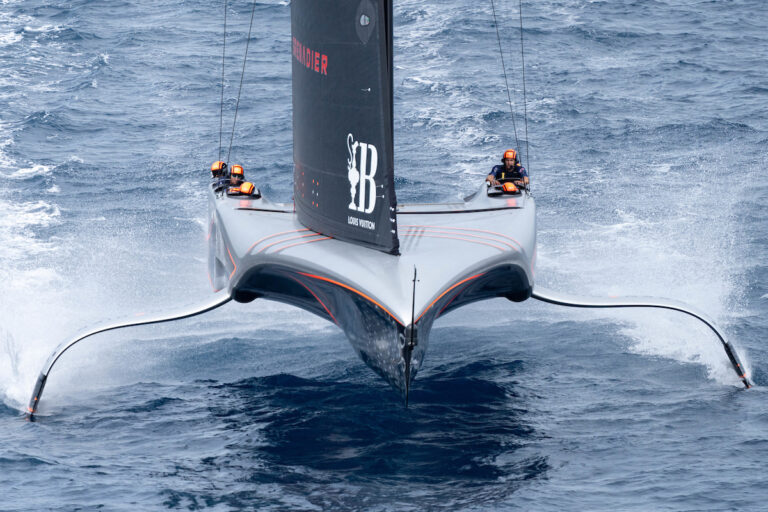
Barcelona Breeze Increase Spikes Intensity

Luna Rossa Dominant on Busy Day in Barcelona
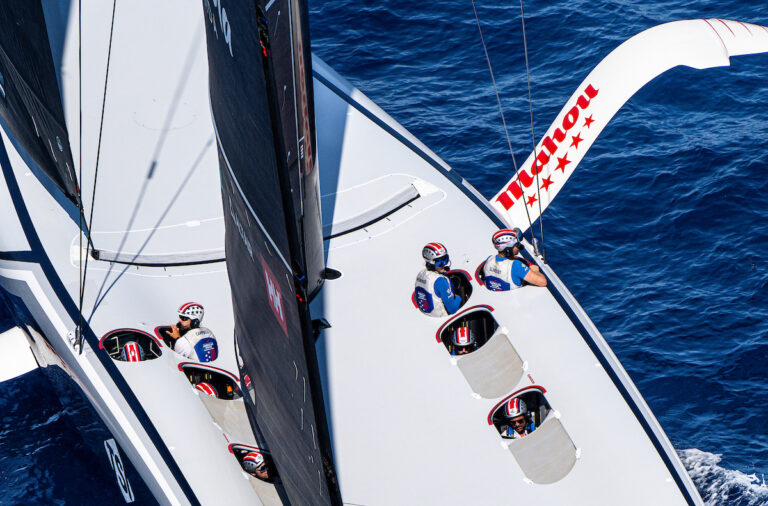
One and Done on Drifter Day of Cup Challenger Series
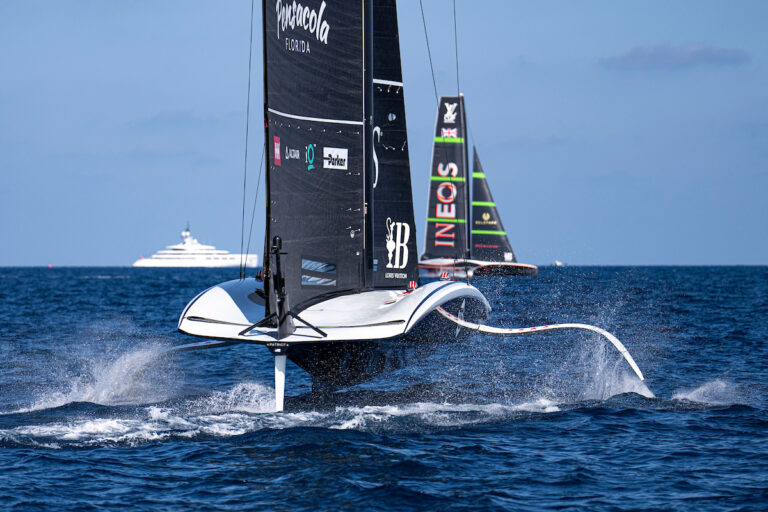
Shocks and Drops At Louis Vuitton Cup Start

- Digital Edition
- Customer Service
- Privacy Policy
- Terms of Use
- Cruising World
- Sailing World
- Salt Water Sportsman
- Sport Fishing
- Wakeboarding
Log in or Sign up
You are using an out of date browser. It may not display this or other websites correctly. You should upgrade or use an alternative browser .
Optimum heel angle
Discussion in ' Sailboats ' started by Blether , Jan 21, 2004 .
Blether Guest
Traditional sailing advice says 'sail the boat flat'. These days we see part/whole crews sitting to leeward while the boat is still heeled that way (that is, intentionally allowing the boat to heel to leeward). Intuitively, more power comes from the sails if they are upright: hull performance at different angles varies with hull design. Is it possible to state rules of thumb for the optimum heel angle for going upwind, for different boats ?
Olav naval architect
Hi Blether, I can only imagine one situation with modern boats where heeling to leeward is desirable: light airs. In my opinion the "traditional sailing advice" is still right. As you mentioned you'll get more power from the rig, more power from the foils (with lower down forces), and of course lower wheather helm you then would have to compensate with the brake (=rudder). In light conditions it may be clever to heel to induce shape to the sails (if you don't have full battens). A different story are catamarans/multihulls (to get one hull out of the water to reduce drag), hard-chined scows (to reduce wetted surface area and to get a sharp entrance at the bow), and traditional boats with large overhangs (to increase waterline length). I am an Int. Moth sailor and we use to sail our boats with windward heel upwind in strong breezes. This increases righting moment, gives lift from the sail and a momentum to leeward to compensate the windward helm that comes from mast rake. So as a conclusion I don't think there is a rule of thumb as long as you don't have a specific hull in specific conditions in mind. All the best, Olav
Thanks Olav. Yes, I'd always believed in the traditional advice: and of course at the very light-wind end there are gains in using gravity to maintain sail shape. But recently I see 30- and 40-foot yachts sailed as I described, and today I read on the net that a Laser's hull is most efficient upwind, heeled 20 degrees to leeward. I can understand that - it's very flat, so one can picture a reduction in wetted area with the heeling. It's been a few years since I sailed a Laser, and I never raced one, so I don't know how this balances out with the lowered sail power. Those who race a particular type and know it well, what balance is effective ? Designers, how do you recommend owners sail your yachts, wrt lateral balance ?
BrettM Senior Member
The only way to make a laser fast upwind is to hike hike hike hike hike hike hike hike hike hike hike to keep it flat. And that hurts. Very light airs to keep shape is a different story.
dionysis Senior Member
it's complicated It is always recomended that you sail a boat flat, for the above reasons: aero and hydrofoils work at their most efficient etc., but on big boats, that are not dependent on movable ballast, sailing flat ultimately depends on the righting moment of the boat. Designers have to juggle a lot of factors and make a lot of compromises - the upshot of which is: if you graph the thrust to sideforce of conventional foils asa function of heel, you find there is a point; around about 30 degrees, beyond which increasing heel gives less and less drive. In other words you do not lose too much efficiency of foils up to about 30 degrees, but beyond this you lose efficiency very quickly. I hope this is what you were getting at Blether
SailDesign Old Phart! Stay upwind..
Strangely, we found with one of the first fat/flat Open60s that the VPP, which said "sail at 20-23 degrees in 12 knots" was correct. It took a bit to get there, but we gained 0.5 knot or so. It was not comfy, but it was fast - probably due to a narrower waterplane at that angle, and there was _plenty_ of sail area available on the beast. Steve
tspeer Senior Member
Inland lake scows are heeled 15 degrees to reduce wetted area upwind, and sailed flat for planing. Their boards and rudders are canted to be vertical when the boat is heeled. Most dinghies go best when upright, but may need to be sailed more bow-down in light winds. So it depends on the design of the boat. See Frank Betwaite's "High Performance Sailing" - he has 1/3 of the book devoted to dinghy handling.
SuperPiper Men With Little Boats . .
Heeled To Windward So with enough movable ballast, a small keelboat would be more efficient heeled to windward?
Yup, in a breeze that is - The lift vector together with the heeling vector has an upward component, instead of being either horizontal or downward when the boat is heeled to leeward. This means that there is less heeling moment, but together with this, a component of lift is actually lifting the boat out of the water. In sailboard sailing, this heel to windward enhances lift. Tom would have a far more substantial contribution to better understanding of this enhanced lift effect.
- Advertisement:
thesailman Guest
Downwind Heeling to windward downwind in light airs raises the sail and puts it in more wind. To heel to windward when going to windward would increase lift.
Optimum locations for water tank on a 26' crusing sailboat?
sailboat that planes really easily while heeled?
Designing a symmetrical hull under heel
Dinghy heeling moment (again)
Can cp increase when a boat heels.
Once again on righting moment versus heeling moment
Ballasted leeboards heeled effect on GZ
heeling hull waterlines
hull shape and heeling angles
real world measured drag coefficient, heeled and straight, of a common glass keelboat
- No, create an account now.
- Yes, my password is:
- Forgot your password?

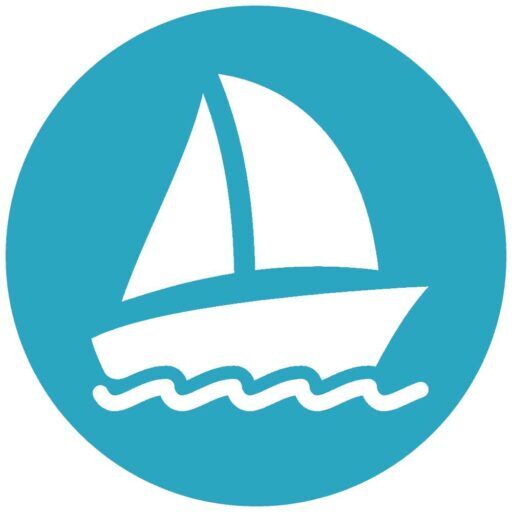
WaterCraft 101
Your guide to fun on the water!
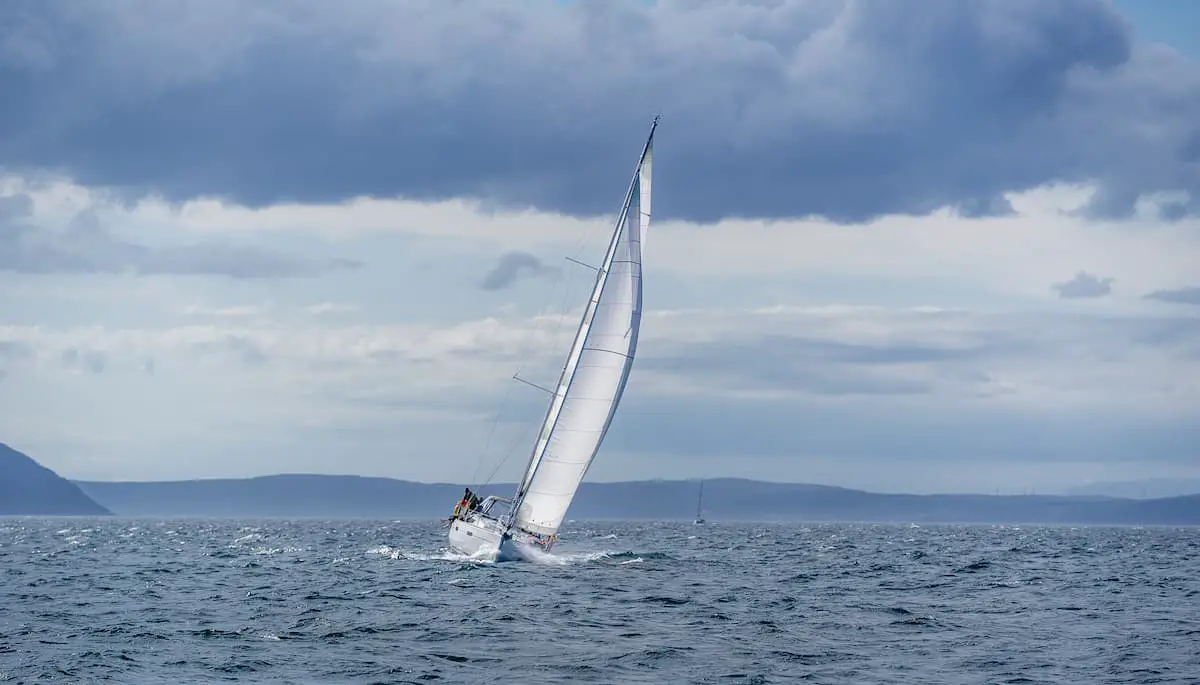
What To Do When a Sailboat Is Heeling Too Much (Explained)
Sailing is a fun activity for many people, but it comes with the innate prerequisite of being on the water rather than on stable ground. Aspiring captains must learn how to navigate and operate a boat while it rocks around in the water, which means dealing with things like heeling (i.e., leaning too far to the left or right). What do you do when your boat is heeling more than you can handle?
When a sailboat is heeling too much, you can ease or let out the sails to stop them from catching as much wind. This should greatly reduce heel. You can also redistribute weight on the boat to balance it out or use a boat that naturally heels less.
In this article, I will go into detail on some of the things you can do to mitigate how much a sailboat heels, as well as some other related topics. Read on if you’d like more information on sailboat heeling and how to reduce it.
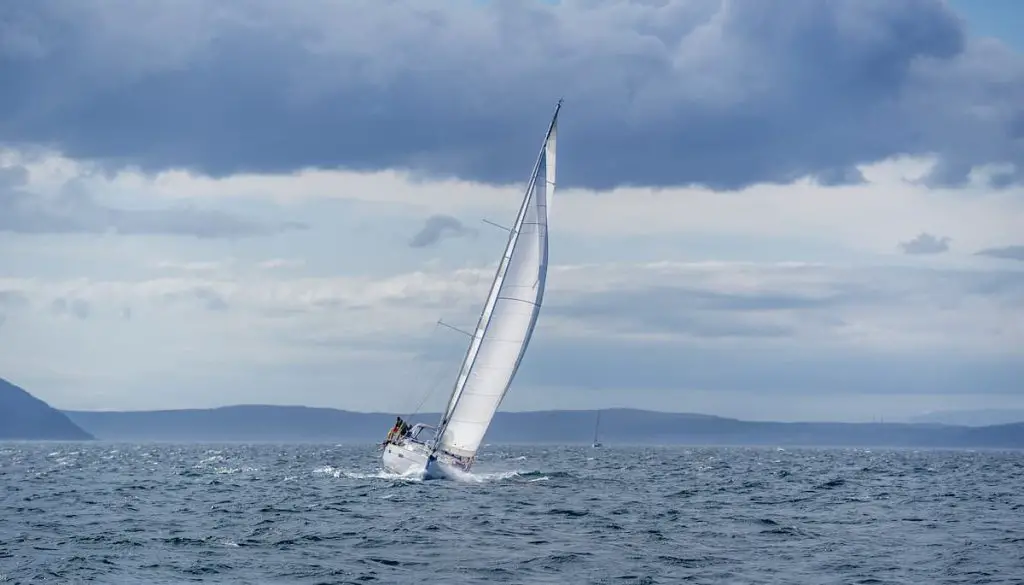
Table of Contents
How a Sailboat is Made Can Affect Heeling
One of the biggest factors in how much a sailboat can heel is simply how the boat is made. Everything from the shape of the keel to the size of the boat impact how easily and safely it can heel.
If you find that your boat is consistently heeling more than you would like, it may just be how that particular boat is made. Some people actually prefer a sailboat that can heel easily, especially those who compete in boat racing, because it can increase a boat’s speed by allowing the sails to catch more wind.
As such, if you have a choice in the matter, try to look for a sailboat that’s made with stability in mind. Some boats are made specifically to handle heeling better and maintain stability, which will likely be an advertised feature as well as one that’s more in demand for recreational sailors.
The Keel Can Affect a Sailboat’s Propensity to Heel
Even if you don’t have the option of trying a different boat, you should still look yours over, especially the keel , which is the protruding piece at the bottom of the boat.
The keel can vary greatly in appearance depending on what it’s built for, but some boats have keels specially designed to reduce heeling through means like catching on the water and counterbalancing the vessel.
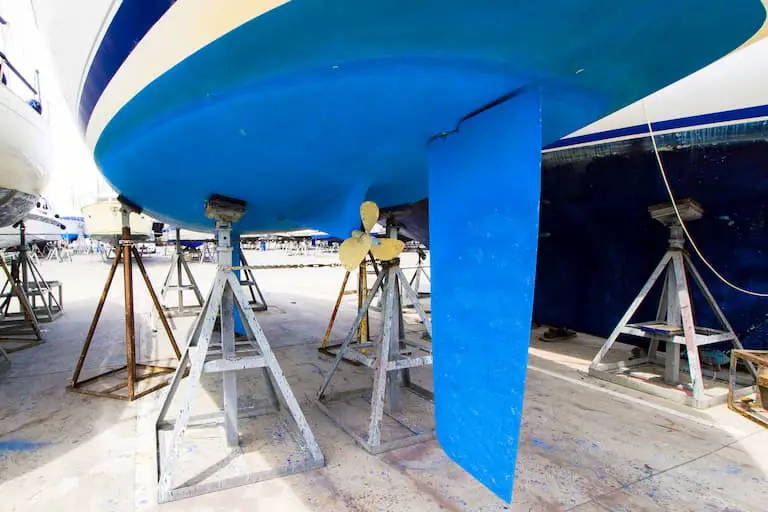
You might not be able to easily replace or modify a sailboat’s keel, but you can at least check to make sure it’s working as it’s supposed to. If something important is damaged or broken off, this could impact your boat’s ease of control, especially when it comes to heeling.
Adjust the Sails to Reduce Heeling
The sails are the primary cause of heeling in a sailboat.
A boat heels when its sails catch enough wind to pull it to the side and make it lean. This is usually fine but can put stress on the mast and risk capsizing your vessel in extreme cases.
The easiest way to stop this is by simply lowering the sails. If there’s nothing for the wind to catch on, your boat shouldn’t heel much, if at all. While this is a temporary solution unless the boat has another form of propulsion, it’s effective nonetheless.
If the wind picks up while you’re out sailing and it starts causing your boat to lean more than you expected, taking down the sails for a while will let you wait it out.
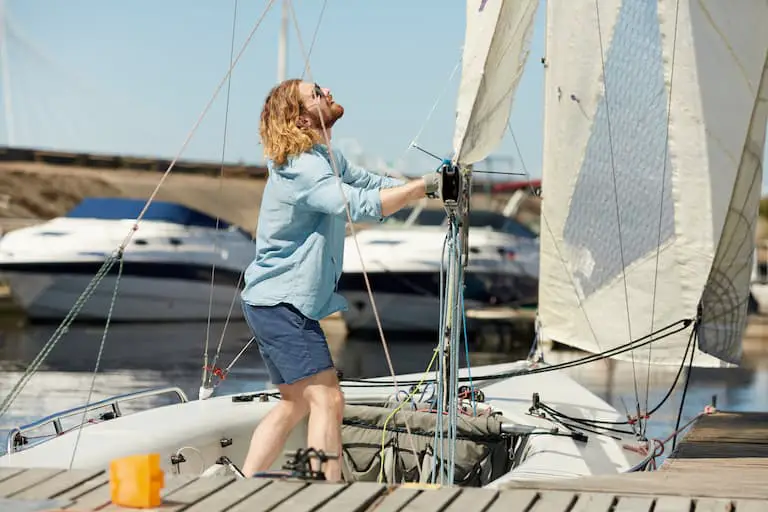
Use a Motor When the Wind is Too Strong to Reduce Heeling
Speaking of alternative forms of propulsion, it’s a good idea to have a backup for when the weather doesn’t agree with sails. This way, any time a heavy wind starts tugging your sailboat around more than you’re comfortable with, you can just pull the sails in and start up the motor.
A boat being propelled mechanically can also go faster than one powered by the wind in its sails under the right circumstances. If you want more options for fast travel, this is another good reason to consider installing a motor on your boat.
Just keep in mind that using both the sails and motor at once won’t necessarily make you go any faster.
Redistribute Weight to Lessen Excessive Heeling
Lowering the sails may be the best way to stop a boat from heeling, but this also means you will be going nowhere fast until the wind calms down unless you have another form of propulsion.
If you want to reduce how much your boat is heeling without slowing down your sailing experience, one easy thing you can do is redistribute the weight on the boat so that it counteracts the wind pulling on the sails.
If your boat is being pulled to one side, have all passengers stand or sit on the opposite side to counterbalance it. If you don’t have any other passengers or this isn’t enough, try moving heavy cargo instead. This is unlikely to completely stop a boat from heeling, but it can mitigate the impact and limit how far the boat will heel.
Will a Sailboat Tip Over?
It can be difficult for passengers to deal with a boat heeling a few degrees more than they’re used to. After all, most people are accustomed to being on solid ground where the floor beneath them doesn’t shift and tilt at awkward angles. However, the concerning part for some is the idea that their sailboat could tip over and capsize.
A sailboat will tip over under the right circumstances. However, this is very unlikely unless the boat is in heavy wind or rough water, and many sailboats are designed to prevent heeling too much. Some sailboats are also able to right themselves when capsized.
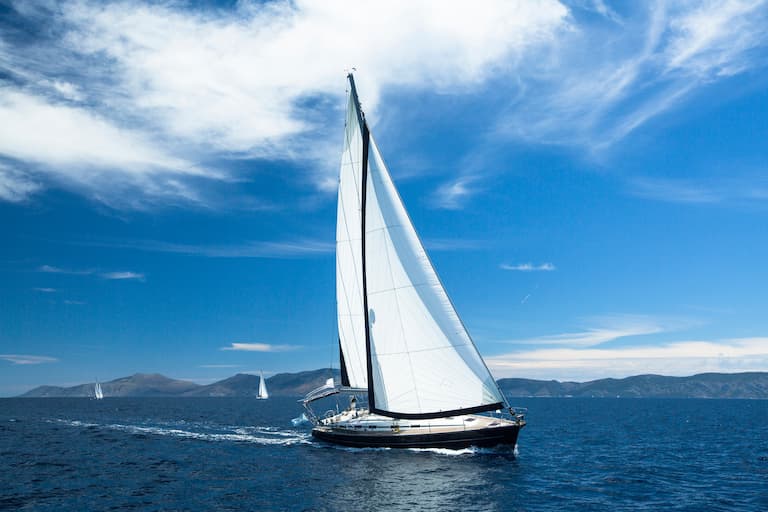
Because capsizing is a possibility, a lot of sailboats have safety precautions implemented to help deal with excessive heeling. This doesn’t mean you should sail out into storms with reckless abandon, but it might put your mind at ease while sailing to know that your sailboat is probably made to stay balanced and even flip itself back over in the event of being capsized.
Check out the video below to find out more about reducing the heel angle on a sailboat:
What To Do When a Sailboat Is Heeling Too Much – Conclusion
It’s perfectly normal for sailboats to heel, but this can cause problems in more extreme cases. Not only is it difficult to walk around on a deck that’s slanted sideways, but it can also put the sailboat at risk of capsizing if the boat heels too much.
Fortunately, there are several things that can be done to mitigate how much a boat can heel as well as allow it to heel more safely. The suggestions made in this article are the easiest ways to “right the ship” as it were if heeling too much.
Bryan is a Las Vegas resident who loves spending his free time out on the water. Boating on Lake Mohave or Lake Havasu is his favorite way to unwind and escape the hustle and bustle of the city. More about Bryan.
Similar Posts
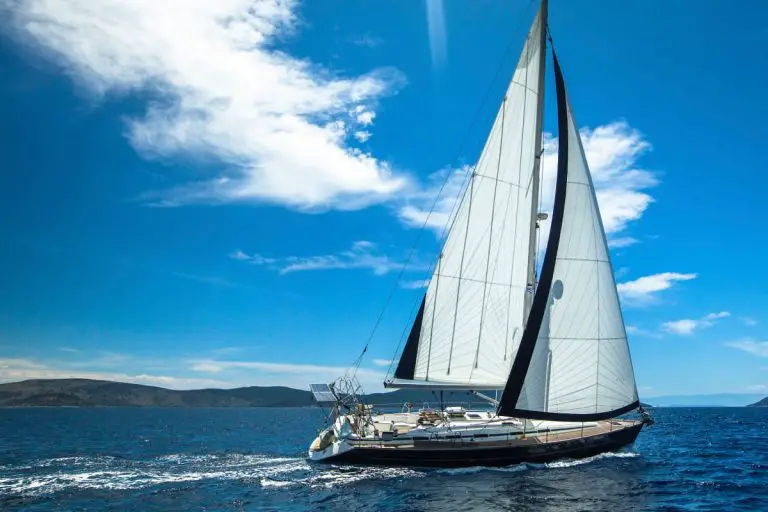
Why Do Sailboats Have Two Sails? (Explained)
If you’ve ever been sailing or watched a regatta, you’ll know that boats typically have two or more sails. It’s uncommon to see them with less than that. But what’s the reason behind this? Sailboats have two sails to improve the boat’s maneuverability, balance, speed, and ease of handling. The front sail is called the…
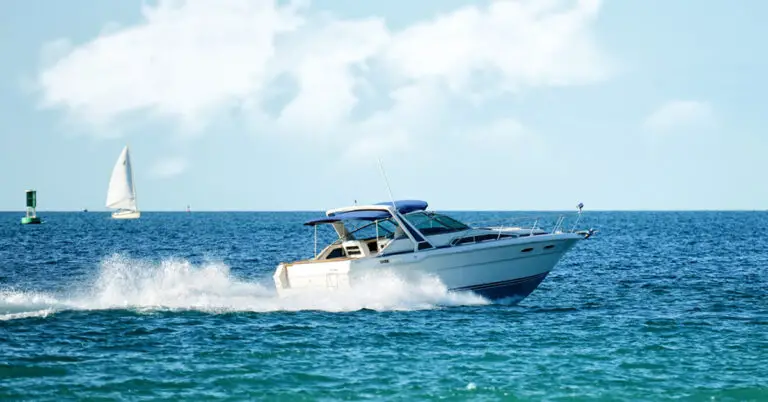
Sailboat vs. Powerboat: Which Is the Give-Way Vessel? Understanding Navigation Rules on the Water
Navigating the waters is an exciting adventure, whether you’re at the helm of a sleek sailboat or commanding a powerful motorboat. However, along with this thrilling journey comes the responsibility of understanding and adhering to the marine navigation rules, specifically those concerning the right of way or the “give-way” vessel. This aspect is vital to…
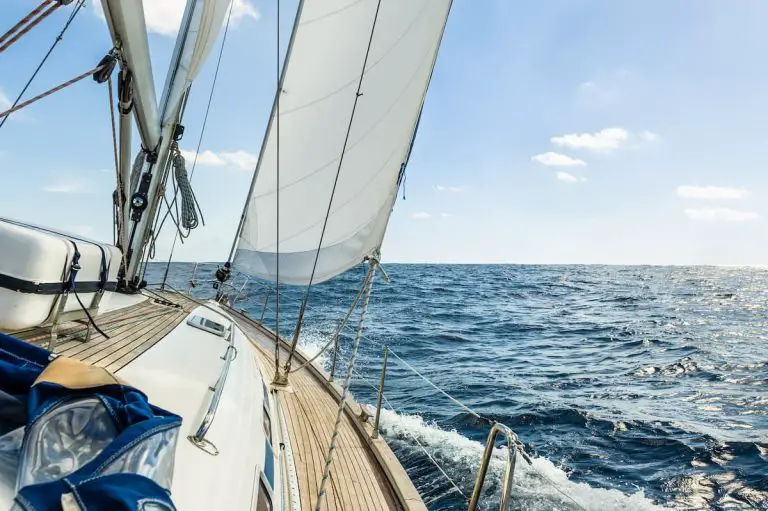
How Far Can a Sailboat Heel? (The Simple Answer)
Heeling is when a sailboat leans to one side, which can occur naturally or deliberately. When done deliberately, proper heeling enables a sailboat to travel faster. This, in turn, begs the question of how far a sailboat can heel? The optimal heeling range for sailboats varies by model and preference but usually sits between 10…
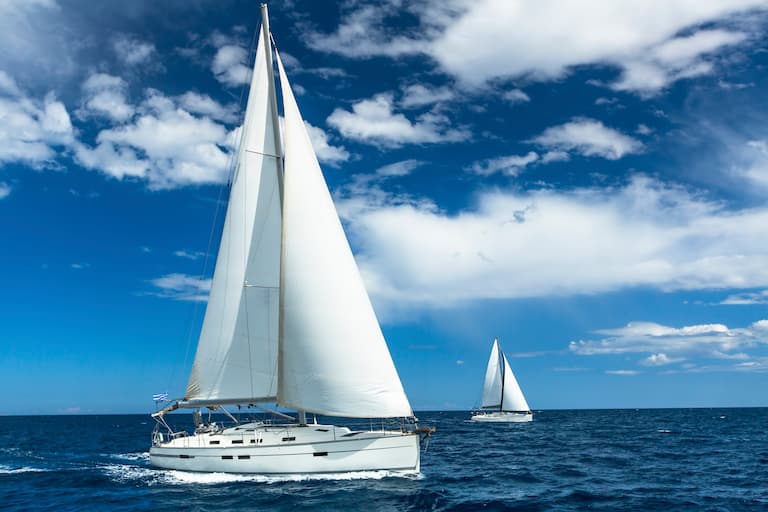
How Tight Should Sailboat Lifelines Be? (Need to Know!)
A lifeline is a safety device frequently found on sailboats and on construction sites. It’s composed of wire and stanchions, which are secured around the ship’s perimeter to prevent passengers from being thrown overboard or accidentally falling. But how tight should they be? Sailboat lifelines should be tight enough so they only stretch about two…
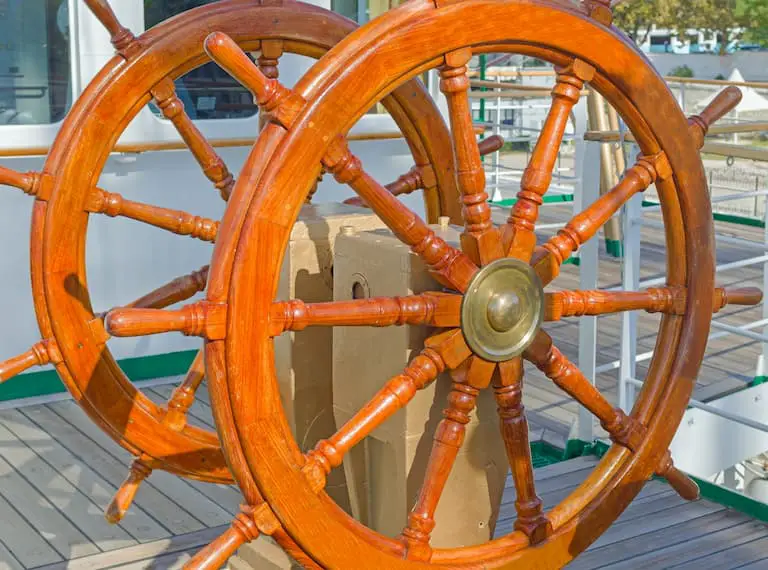
Why Some Sailboats Have Two Helms (Dual Helms Explained)
While most sailboats have a single helm with a steering wheel in the center, some larger sailboats or racing boats may have two helms. So, why do these sailboats have double helms? Are there any practical benefits of two helms on sailboats? Some larger sailboats have two helms as it helps with steering from different…

- Forums New posts Unanswered threads Register Top Posts Email
- What's new New posts New Posts (legacy) Latest activity New media
- Media New media New comments
- Boat Info Downloads Weekly Quiz Topic FAQ 10000boatnames.com
- Classifieds Sell Your Boat Used Gear for Sale
- Parts General Marine Parts Hunter Beneteau Catalina MacGregor Oday
- Help Terms of Use Monday Mail Subscribe Monday Mail Unsubscribe
Healing angle
- Thread starter cstonedent
- Start date Jan 20, 2014
- Beneteau Owner Forums
- Ask A Beneteau Owner
My wife and I have sailed 02 311 for one season. We had an on board lesson. Understand the boat is tender, need to reef sooner and the boat sails just as fast more upright with a reef. My question is what heel angle is upright? What heel angle gives best performance? I guess I am looking for numerical ideal heel angle, knowing there are no absolutes, just want to have a target to aim for. All insights are welcome
I don't know your ship but 15-18 degrees seem to come up a lot around here I believe. 25-30 may not be optimum but it sure is funner... Welcome to the boards.
I imagine it would vary from boat to boat but I can tell you that from 15 to 30 I gain .5mph. in the wife were on board, it would def not be worth it. with just me like today, I found that I was comfortable until about 25, after that I started to fall off some to bring the boat back up then eventually reefed. reefed I dropped the .5mph but was able to point higher more comfortably which a lot of times means more than the little bit of speed. I am also REALLY new to sailing so value this at what you paid for it!!
the more upright you can keep your boat, the better it is... the hull has almost perfect lines for sailing in an upright position. but...... there is a balance between how much wind you're catching and how far the hull lays over.... to far over and you are losing speed due to the hydrodynamic drag on the hull. and not enough heel means you need to catch more wind to move the boat faster. most hulls are designed to sail fairly well with up to about 20 degrees of heel. after that you are usually working the hull and rigging too hard against the wind for the best efficiency....
JK_Boston_Catalina310
We sail a Catalina 310. It's less tender than the B311 but has some similar features (I.e. Wide beam carried far aft, high freeboard). I find we sail fastest and most stable at 10-15 degrees of heel. At over 20 it's uncomfortable. By comparison our C&C 24 was best at 25. Every boat is different but I find the modern hull designs prefer to be relatively flat.
Keep the Main out of the water. It tends to slow you down.
You did not mention what keel you have. It's important. The deeper the keel the more heel you can handle. Heel not only effects speed, it effects slide slip. Too much heel and you can be slipping sideways 10 degrees. Any boat heeling 25 degrees is slipping sideways like crazy. A flat boat will hammer you. Your boats hull was based on the Figaro one design race boat. Keep it flat in light airs. 12-16 in most most mid breezes.
Paul Mermelstein
The 311 hull design has a relatively flat "canoe" bottom and a wide beam carried aft. You will want to sail much flatter than some other hull shapes. Numerically, you may want to try 10 degrees and go up to 15 at most, and see what works best for you, your crew, and your boat. It also depends on the point of sail and how your sails are set. Also remember, the more heel, the more you could have leeward slippage, wind spillage from the sails, and the tendency for weather helm. These all contribute to less performance and less comfort. But again, each boat and boater are different. Experiment.
I have a 323 and have found that keeping the boat around 10 to 12 degrees of heel is faster and allows the boat to point slightly higher. If the wind gets above 12 knots, a reef works better than trying to retain a fully hoisted main, and there is no loss in hull speed. It's fun to be able to outrun some 36 and 38 foot boats that are carrying a lot more sail.
DougM said: I have a 323 and have found that keeping the boat around 10 to 12 degrees of heel is faster and allows the boat to point slightly higher. If the wind gets above 12 knots, a reef works better than trying to retain a fully hoisted main, and there is no loss in hull speed. It's fun to be able to outrun some 36 and 38 foot boats that are carrying a lot more sail. Click to expand
watercayman
I have a 311 with a swing keel. Interestingly, i tend to sail almost always with the keel all the way up, even in fairly stiff breezes. I find the boat sails fastest somewhere around 15-20 degrees of heel (or maybe its just more fun and seems faster). However, as Jackdaw said, I slip sideways a lot in high wind without the keel down. The boat itself doesn't seem to mind - it goes along quite well regardless... but I imagine I'm past the point of diminishing returns of power against hull drag on most days. While on a windy day (which most are here), I can see heel of 30-35 degrees, it is nearly impossible to get the rail in the water on this boat - it is pretty clearly designed to sail flatter as everyone has said.
Generally speaking, Flat is Fast. And the instrument reading that matters is VMG, not knots.
JRacer said: And the instrument reading that matters is VMG, not knots. Click to expand
Thanks for the imput. Jackdaw I have a fin keel (bulb on the bottom) with 4' 9" draft. I know I have a long way to go on the learning curve but you all have helped me get a desired concept in my head that I can begin working with. Will also practice my spelling.
- This site uses cookies to help personalise content, tailor your experience and to keep you logged in if you register. By continuing to use this site, you are consenting to our use of cookies. Accept Learn more…

IMAGES
VIDEO
COMMENTS
Most cruising sailboats generally have an optimal heeling angle of 10-20 degrees. When sailing close-hauled, you might have to push it down to 25 degrees to keep your forward motion, but heeling too far will probably make you slower. 10-15 degrees is a good compromise between performance and comfort.
A sailboat is designed to comfortably heel at a certain angle, usually between 15 - 25 degrees. Heeling over more than this is uncomfortable and slows the boat down. Generally, sailboats with keels can not tip over or capsize under normal sailing conditions. This is because of the weight in the keel.
Dinghies and Small Boats: Dinghies are designed to be agile and may heel significantly, especially when sailed aggressively. Capsizes can happen but are often a part of dinghy sailing. Cruising Sailboats: Most cruising sailboats are designed to be stable and comfortable. They typically perform best at an angle of heel between 10° and 20°.
Chariot has a target speed of 6.7 knots, but as the beamiest design, to get there the heel angle must be limited to 26 degrees, and sails must be reefed to 80 percent and flattened. The Daniells ...
The peak of the curve signifies the angle of heel where the boat is most resistant to heeling forces, and this point is defined by the largest distance between the CG and CB. (Illustration by Regina Gallant) The "smiley face" area under the positive portion of the GZ curve (the positive energy area, PEA) should be compared with the area ...
Heeling is a way of life for monohull sailboats. Heeling is, not only natural, but in most cases essential for making good speed under sail. There's a lot physics that go into heeling and determining the proper angle of heel for a given set of conditions, but allow me generalize: Sailboats with narrower beams tend to tolerate larger heel angles than beamer boats.
looking for a chart of heel angle for various wind speeds and points of sail for a catalina 30. 23-24 degrees maximum according to the 2007 Americap VPP polars. You can get polars for your boat from US Sailing. Jim Teeters is the guy to talk to. The old VPP showed maximum heel for best performance as 26-27 degrees.
At a stable angle of heel (for a sailboat) and a steady speed, aerodynamic and hydrodynamic forces are in balance. Integrated over the sailing craft, the total aerodynamic force (FT) is located at the centre of effort (CE), which is a function of the design and adjustment of the sails on a sailing craft.
Let's start with the question of how much heel is appropriate. In quantitative terms, the answer is probably somewhere between 20 and 25 degrees maximum for a displacement monohull, depending on boat-specific characteristics. Multihulls and high-performance monohulls need to be sailed at minimal heel angles.
Some boats sail better in chop with a slight angle of heel. If so, they make other helm balance adjustments and often accept a little weather helm. Scows are designed to sail with 10-15 degrees of heel. The best scow sailors adjust to get a nearly neutral helm at that optimum angle of heel. Sailing by feel upwind
With balance and sail trim in good form, I had at most 10 to 15 degrees heel with apparent wind at about 12 knots a little bit aft of beam. At this point of sail, the boat isn't heeling but it is squatting and the sails are standing nice and tall to take full advantage of the wind. Of course I had a full main and a 150 genny pulling with all it ...
At 30-35 degrees there is NOT excessive weather helm. I guess I am thinking that I should learn to sail her at greater angles of heel, rather than always reducing sail to stay within 25 degrees. This is an older, IOR-inspired design with moderate beam (10ft) for her length of 31ft.
Leeway is the distance (or angle) a boat drifts off course to leeward due to the sideways force of the wind. Notice the boat 's bow is pointing toward the mark but the boat is slipping to leeward. This is because the wind is pushing the boat sideways. The angle between the boat's heading and its actual track through the water is called the ...
The M&R 56 is fastest up wind at about 23-25. Boats that are not as easily driven will need more heel, and full-keel boats with a lot of wetted surface are often fastest at high angles—as much as 35 degrees. That said, many people, particularly those new to sailing, let the boat heel too much. Anyway, every sailboat should have a way to ...
The slope of the curve at low angles of heel tells us whether the boat is tender (shallow slope) or stiff (steep slope). The righting moment at 15 to 30 degrees of heel tells us about the boat's sail-carrying power. A large righting moment indicates a boat that can fly a lot of sail; a boat with a lower righting moment will need her sails ...
The sail plan and design of the vessel also affect the appropriate heel angle. Smaller boats with fewer sails may require lower heeling angles compared to bigger boats with complex sail plans. Determining the appropriate degree of heel for a sailboat may vary depending on different circumstances. Nonetheless, maintaining a heel angle between 10 ...
As the wind builds, use heel angle as your guide: Steer and use the sails to keep the boat on its feet and stay fast in the chop. Paul Todd/ Outside Images. It's good to have rules of thumb to ...
This is sometimes a design question. In the olden days, an optimum angle of heel was designed into the bottom shape of around 12 to 15 degrees. Modern designs typically sail better upright than heeling. However, for a sailboat that will plane on her stern quarter, heeling means getting wetted surface out of the water, so the hull actually ...
Inland lake scows are heeled 15 degrees to reduce wetted area upwind, and sailed flat for planing. Their boards and rudders are canted to be vertical when the boat is heeled. Most dinghies go best when upright, but may need to be sailed more bow-down in light winds. So it depends on the design of the boat.
An offset or deviation from normal on this axis is referred to as list or heel. Heel refers to an offset that is intentional or expected, as caused by wind pressure on sails, turning, or other crew actions. The rolling motion towards a steady state (or list) angle due to the ship's own weight distribution is referred in marine engineering as list.
Hunter 25.5 Carlyle, IL. Jan 25, 2005. #4. Waterline. IIRC, sailboats have a longer waterline when heeled. I have heard that 15 - 20 degrees is the best compromise between longer waterline and sail efficiency. At just under 20 degrees seems to work best for our boat. She hits a nice balance and is fastest. J.
The Keel Can Affect a Sailboat's Propensity to Heel. Even if you don't have the option of trying a different boat, you should still look yours over, especially the keel, which is the protruding piece at the bottom of the boat.. The keel can vary greatly in appearance depending on what it's built for, but some boats have keels specially designed to reduce heeling through means like ...
Nov 24, 2012. 586. Jan 21, 2014. #10. DougM said: I have a 323 and have found that keeping the boat around 10 to 12 degrees of heel is faster and allows the boat to point slightly higher. If the wind gets above 12 knots, a reef works better than trying to retain a fully hoisted main, and there is no loss in hull speed.